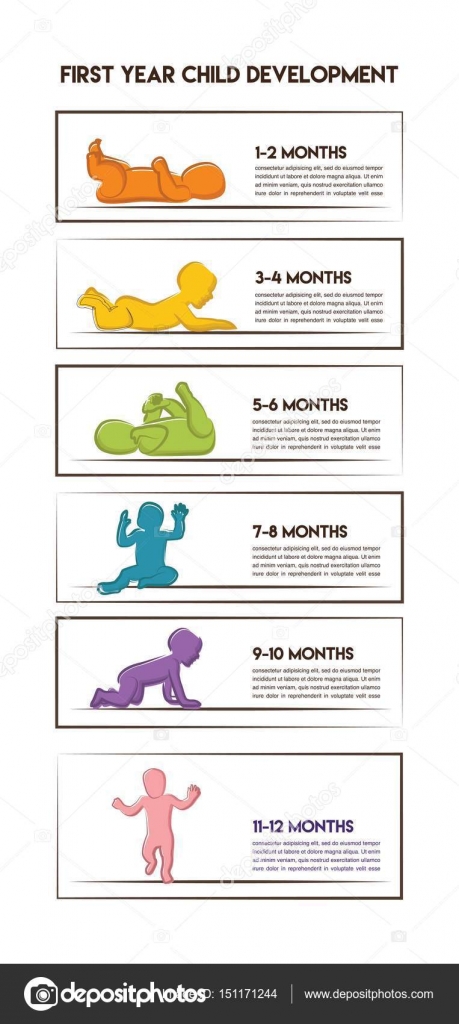Motor Milestones for Infants: Developmental Milestones for All Ages
What are the motor milestones for infants? When do babies reach certain developmental milestones in their first year of life. Discover the key motor, sensory, communication, and feeding milestones for 0-3 months, 4-6 months, 7-12 months.
Motor Milestones for Infants: Developmental Milestones for All Ages
Developmental milestones are the behavioral or physical checkpoints that children reach as they grow. These milestones, validated by the American Academy of Pediatrics, provide a guide for tracking a baby’s growth and development from birth to the first year of life.
Understanding Developmental Milestones
Developmental milestones are organized into four core areas of child development:
- Motor milestones: Tracking a baby’s gross motor skills (in the core and upper body) and fine motor skills (in the hands and feet).
- Sensory milestones: Monitoring the development of a baby’s seven senses.
- Communication milestones: Observing the building blocks of a baby’s communication and social skills.
- Feeding milestones: Noting the phases of a baby’s feeding development.
It’s important to remember that all babies are different, and milestones are typically reached within a range of ages. If you have any concerns about your child’s development, be sure to speak with a healthcare provider.
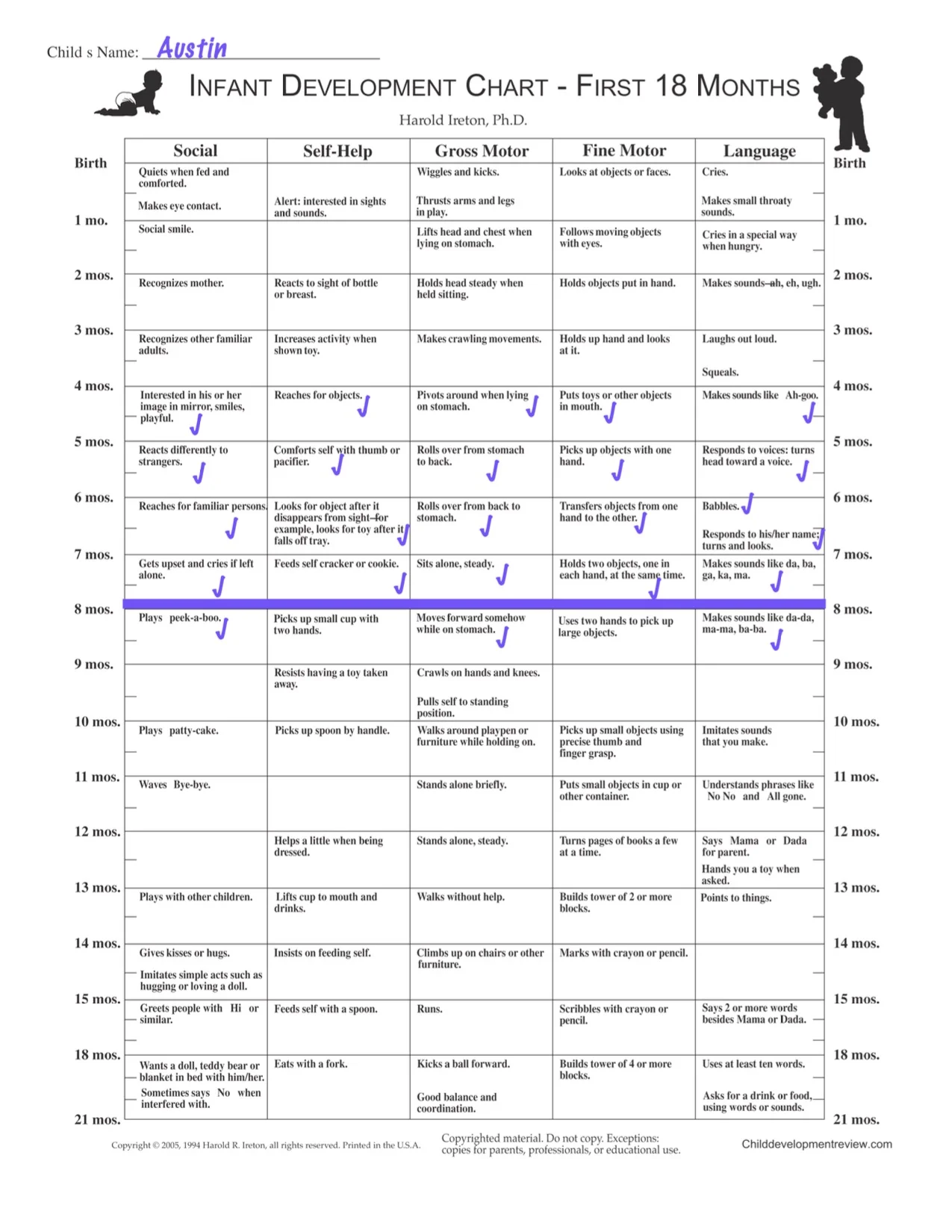
0-3 Month Milestones
Motor Milestones
During the first three months, a baby will:
- Push up on their arms while lying on their tummy
- Lift and hold their head up while lying on their tummy
- Move their fists from closed to open
- Bring their hands to their mouth
- Move their legs and arms off the surface when excited
Sensory Milestones
In the first three months, a baby will:
- Attempt to reach for a toy held above their chest while lying on their back
- Visually track a moving toy from side to side while lying on their back
- Keep their head centered to watch faces or toys while lying on their back
- Calm with rocking, touching, and gentle sounds
- Enjoy a variety of movements
Communication Milestones
During the first three months, a baby will:
- Quiet or smile in response to sound or voice
- Turn their head towards sound or voice
- Show interest in faces
- Make eye contact
- Cry differently for different needs (e.g., hungry vs. tired)
- Coo and smile
Feeding Milestones
In the first three months, a baby will:
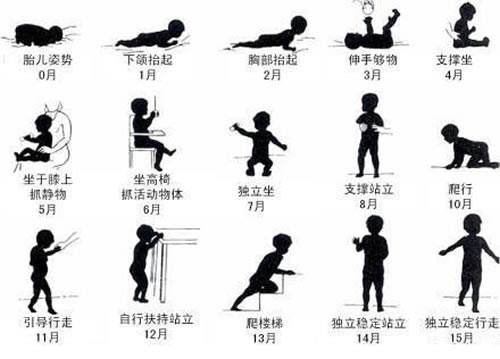
- Latch onto a nipple or bottle
- Move their tongue forward and back to suck
- Drink 2 to 6 ounces of liquid per feeding, 6 times per day
- Suck and swallow well during feeding
4-6 Month Milestones
Motor Milestones
During the 4-6 month period, a baby will:
- Use their hands to support themselves while sitting
- Roll from back to tummy and tummy to back
- Accept their entire weight with their legs while standing with support
- Reach for nearby toys while on their tummy
- Reach both hands to play with their feet while lying on their back
- Transfer a toy from one hand to the other while lying on their back
Sensory Milestones
In the 4-6 month period, a baby will:
- Use both hands to explore toys
- Generally be happy when not hungry or tired
- Bring their hands and objects to their mouth
- Calm with rocking, touching, and gentle sounds
- Not be upset by everyday sounds
- Enjoy a variety of movements
Communication Milestones
During the 4-6 month period, a baby will:
- React to sudden noises or sounds
- Listen and respond when spoken to
- Begin to use consonant sounds in babbling, e.g., “da, da, da”
- Make different sounds to express feelings
- Notice toys that make sounds
- Use babbling to get attention
Feeding Milestones
In the 4-6 month period, a baby will:

- Show interest in food
- Open their mouth as a spoon approaches
- Move pureed food from the front of their mouth to the back
- Begin to eat cereals and pureed foods – smooth, pureed food (single ingredient)
7-12 Month Milestones
The motor, sensory, communication, and feeding milestones for 7-12 months will be covered in the next section of the article.
Developmental Milestones for All Ages
Developmental Milestones for Babies and Children
What are developmental milestones?
Milestones are behavioral or physical checkpoints in children’s development as they grow. All of our developmental milestones are validated by American Academy of Pediatrics findings.
These are the core skills infants and toddlers should be reaching. Week by week and month by month, you can check in on baby’s growth and development by following baby’s milestones.
Want these milestones in a handheld guide?
Order Baby’s First Year Milestone Guide
How are the milestones organized?
We have divided our developmental milestones into the core parts of child development:
- Motor milestones: When will baby sit independently? When will baby start to crawl? Motor milestones track baby’s gross motor skills (in their core and upper body) and fine motor skills (in their hands and feet).

- Sensory milestones: When will baby be able to visually track objects? When will baby have a regular sleep schedule? Sensory milestones track the development of baby’s 7 senses.
- Communication milestones: When will baby say their first words? When do toddlers begin responding to questions? These language milestones are the building blocks to baby’s communication and social skills.
- Feeding milestones: When is baby ready for finger foods? How long should baby nurse for? These milestones help track when babies start new phases of feeding.
Remember, all babies are different! Milestones mark the month most babies start a certain behavior or ability based on baby’s age, but exact timing will vary. If you have any concerns, request an appointment with a healthcare provider.
Early detection allows for early correction or support. I have witnessed the effect this has a on child’s trajectory hundreds of times over my pediatric career.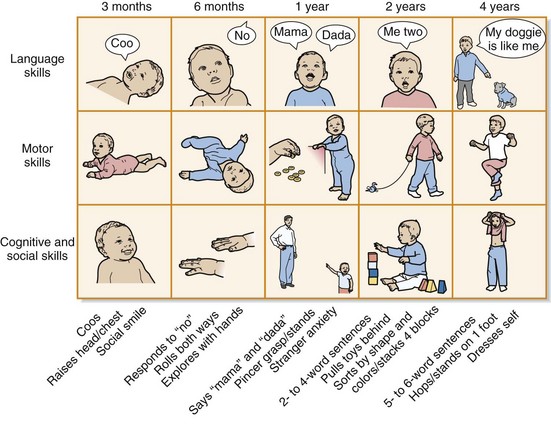 My favorite time is looking back with parents when their children are older and reflecting on the significance of early intervention. We are both grateful.
My favorite time is looking back with parents when their children are older and reflecting on the significance of early intervention. We are both grateful.
-Lori Walsh, MD, FAAP
Be sure to adjust for prematurity. If your child is missing any milestones, be sure to talk with your healthcare provider.
0-3 Month Milestones
Motor Milestones
- While lying on tummy, pushes up on arms
- While lying on tummy, lifts and holds head up
- Able to move fists from closed to open
- Able to bring hands to mouth
- Moves legs and arms off of surface when excited
Sensory Milestones
- While lying on back, attempts to reach for a toy held above their chest
- While lying on back, visually tracks a moving toy from side to side
- While lying on back, keeps head centered to watch faces or toys
- Able to calm with rocking, touching, and gentle sounds
- Enjoys a variety of movements
Communication Milestones
- Quiets or smiles in response to sound or voice
- Turns head towards sound or voice
- Shows interest in faces
- Makes eye contact
- Cries differently for different needs (e.
 g. hungry vs. tired)
g. hungry vs. tired) - Coos and smiles
Feeding Milestones
- Latches onto nipple or bottle
- Tongue moves forward and back to suck
- Drinks 2 oz. to 6 oz. of liquid per feeding, 6 times per day
- Sucks and swallows well during feeding
See Videos of 0-3 Month Milestones
4-6 Month Milestones
Motor Milestones
- Uses hands to support self while sitting
- Rolls from back to tummy and tummy to back
- While standing with support, accepts entire weight with legs
- Reaches for nearby toys while on tummy
- While lying on back, reaches both hands to play with feet
- While lying on back, transfers a toy from one hand to the other
Sensory Milestones
- Uses both hands to explore toys
- Generally happy when not hungry or tired
- Brings hands and objects to mouth
- Able to calm with rocking, touching, and gentle sounds
- Is not upset by everyday sounds
- Enjoys a variety of movements
Communication Milestones
- Reacts to sudden noises or sounds
- Listens and responds when spoken to
- Begins to use consonant sounds in babbling, e.
 g. “da, da, da”
g. “da, da, da” - Makes different kinds of sounds to express feelings
- Notices toys that make sounds
- Uses babbling to get attention
Feeding Milestones
- Shows interest in food
- Opens mouth as spoon approaches
- Moves pureed food from front of mouth to back
- Begins to eat cereals and pureed foods – Smooth, pureed food (single ingredient only), like carrots, sweet potato, squash, apples, pears
See Videos of 4-6 Month Milestones
7-9 Month Milestones
Motor Milestones
- Sits without support
- Sits and reaches for toys without falling
- Moves from tummy or back into sitting
- Starts to move with alternate leg and arm movement e.
 g. creeping, crawling
g. creeping, crawling - Picks up head and pushes through elbows during Tummy Time
- Turns head to visually track objects while sitting
- Shows more control while rolling and sitting
- Picks up small objects with thumbs and fingers
- In simple play imitates others
Sensory Milestones
- Enjoys a variety of movements – bouncing up and down, rocking back and forth
- Explores and examines an object using both hands and mouth
- Turns several pages of a chunky (board) book at once
- Experiments with the amount of force needed to pick up different objects
- Focuses on objects near and far
- Investigates shapes, sizes, and textures of toys and surroundings
- Observes environment from a variety of positions – while lying on back or tummy, sitting, crawling, and standing with assistance
Communication Milestones
- Uses increased variety of sounds and syllable combinations in babbling
- Looks at familiar objects and people when named
- Recognizes sound of their name
- Participates in two-way communication
- Follows some routine commands when paired with gestures
- Shows recognition of commonly used words
- Simple gestures, e.
 g. shaking head for “no”
g. shaking head for “no” - Imitates sounds
Feeding Milestones
- In a highchair, holds and drinks from a bottle
- Begins to eat thicker pureed and mashed table foods
- Enjoys chew toys that can massage sore and swollen gums during teething
- Stays full longer after eating
- Starts to look and reach for objects, such as, food that is nearby
- Shows strong reaction to new smells and tastes
See Videos of 7-9 Month Milestones
10-12 Month Milestones
Motor Milestones
- Pulls to stand and cruises along furniture
- Stands alone and takes several independent steps
- Moves in and out of various positions to explore environment and get desired toys
- Maintains balance in sitting when throwing objects
- Claps hands
- Releases objects into a container with a large opening
- Uses thumb and pointer finger to pick up tiny objects
Sensory Milestones
- Enjoys listening to songs
- Explores toys with fingers and mouth
- Crawls to or away from objects baby sees in the distance
Communication Milestones
- Meaningfully uses “mama” or “dada”
- Responds to simple directions, e.
 g. “Come here”
g. “Come here” - Produces long strings of gibberish (jargoning) in social communication
- Says one or two words
- Imitates speech sounds
- Babbling has sounds and rhythms of speech
- Pays attention to where you are looking and pointing
- Responds to “no”
- Begins using hand movements to communicate wants and needs, e.g. reaches to be picked up
Feeding Milestones
- Finger feeds self
- Eating an increasing variety of food
- Begins to use an open cup
- Ready to try soft-cooked vegetables, soft fruits, and finger foods (banana slices, cooked pasta)
- Might be ready to start self feeding with utensils
- Enjoys a greater variety of smells and tastes
See Videos of 10-12 Month Milestones
13-18 Month Milestones
Motor Milestones
- Walks independently
- Squats to pick up a toy
- Stacks two objects
Sensory Milestones
- Helps with getting dressed/undressed
- Has a regular sleep schedule
- Eats an increasing variety of foods
Communication Milestones
By 15 months:
- May use 5-10 words
- Combines sounds and gestures
- Imitates simple words and actions
- Consistently follows simple directions
- Shows interest in pictures
- Can identify 1-2 body parts when named
- Understands 50 words
By 18 months:
- Responds to questions
- Repeats words overheard in conversation
- Continues to produce speech-like babbling
- Points at familiar objects and people in pictures
- Understands “in” and “on”
- Responds to yes/no questions with head shake/nod
Feeding Milestones
- Increases variety of coarsely chopped table foods
- Holds and drinks from a cup
See Videos of 13-18 Month Milestones
19-24 Month Milestones
Communication Milestones
By 21 Months:
- Uses at least 50 words
- Consistently imitates new words
- Names objects and pictures
- Understands simple pronouns (me, you, my)
- Identifies 3-5 body parts when named
- Understands new words quickly
By 24 months:
- Begins to use 2 word phrases
- Uses simple pronouns (me, you, my)
- Understands action words
- Uses gestures and words during pretend play
- Follows 2-step related directions e.
 g. “Pick up your coat and bring it to me”
g. “Pick up your coat and bring it to me” - Enjoys listening to stories
See Videos of 19-24 Month Milestones
2-3 Year Milestones
Communication Milestones
By 30 months:
- Consistently uses 2-3 word phrases
- Uses “in” and “on”
- At least 50% of speech is understood by caregiver
- Follows 2-step unrelated directions, e.g. “give me the ball and go get your coat”
- Understands basic nouns and pronouns
- Understands “mine” and “yours”
By 36 months:
- Asks “what” and “where” questions
- Uses plurals, e.g. “dogs”
- Most speech is understood by caregiver
- Simple understanding of concepts including color, space, time
- Understands “why” questions
- Understands most simple sentences
Missing Milestones
What to do if your child is not reaching their key developmental milestones
If your child is missing a developmental milestone, request an appointment with a healthcare provider to ask them about how you can get your baby on track!
Remember every baby is different, and milestones typically occur within a general age range.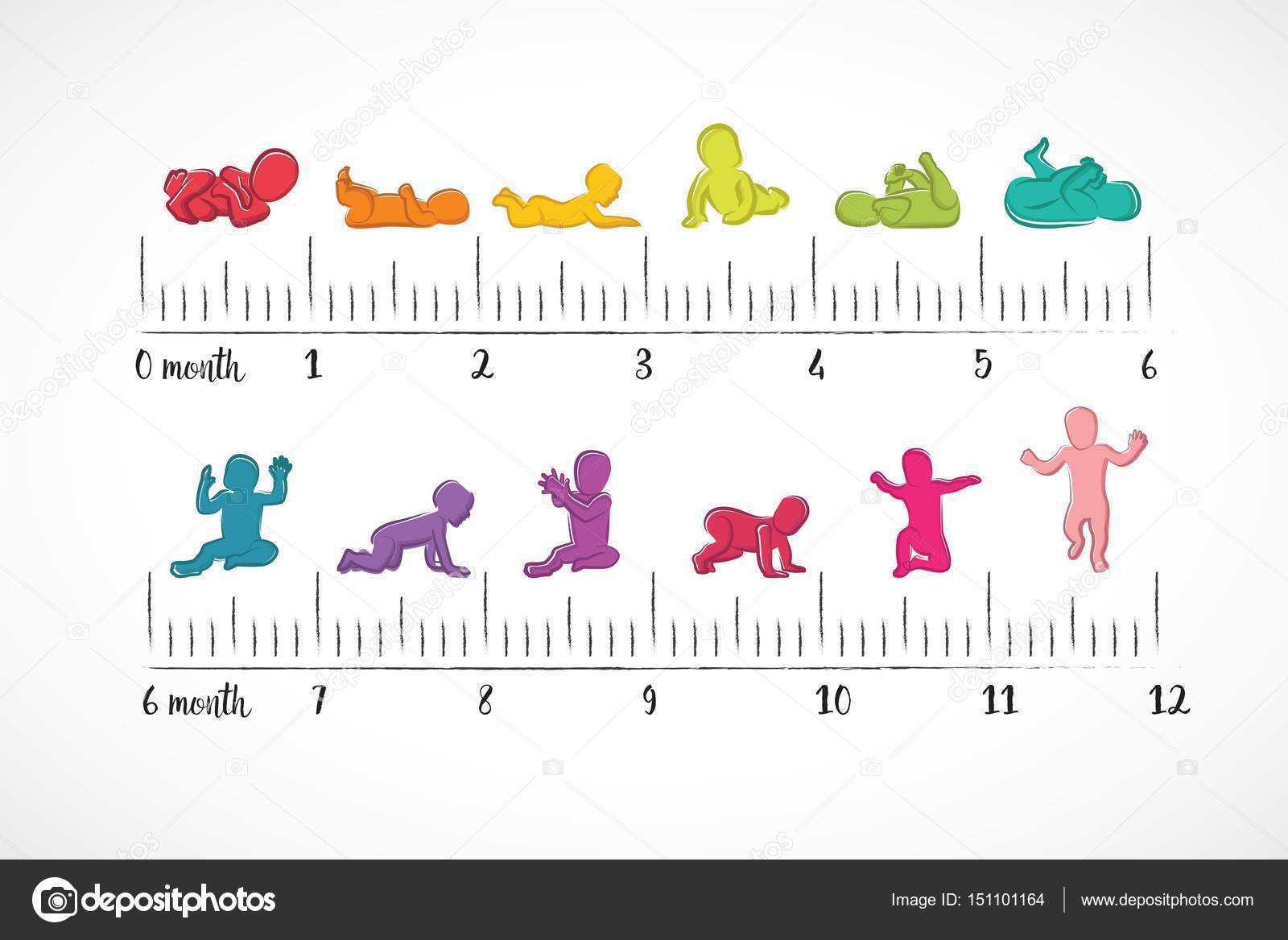
Baby’s early years are some of the most important years for their development, which is why early detection and early intervention are so critical.
As a general pediatrician I often refer parents to the Pathways.org website for free videos and brochures on tummy time and the stages of infant development.
These resources empower parents to track their babies’ developmental progress and bring their concerns to me quickly so that we can provide resources in a timely and efficient manner.
-Karen R. Judy, M.D. FAAP
Browse our website for additional resources to maximize your child’s motor, sensory, feeding, and communication development!
- Topics pages: Covering a wide variety of health topics for your baby’s developmental milestones.
- Videos: Including milestone videos and Parents’ Guide videos, which shows baby’s development in action!
- Blog posts: In-depth and healthcare provider-approved articles providing important health info to help learn the signs of a delay and when to request an appointment with a healthcare provider.

- Baby’s First Year Milestone Guide: This helpful guide is a milestone checklist for infants. Keep track of your baby’s developmental milestones through this organized, color-coded, and compact guide. The ultimate resource center for baby’s development!
- The Baby Games Calendar: If baby enjoys playing, then check out these fun games for infants and toddlers! Baby Games make caring for your baby engaging and interactive, helping with everything from language development to hand eye coordination.
Gross motor skills: birth to 5 years
What are gross motor skills?
Gross motor skill development involves the large muscles in the arms, legs and torso. Gross motor activities are important to everyday physical activities like walking, running, throwing, lifting, kicking, etc. Gross motor abilities also form the basis for fine motor skills and relate to body awareness, reaction speed, balance and strength.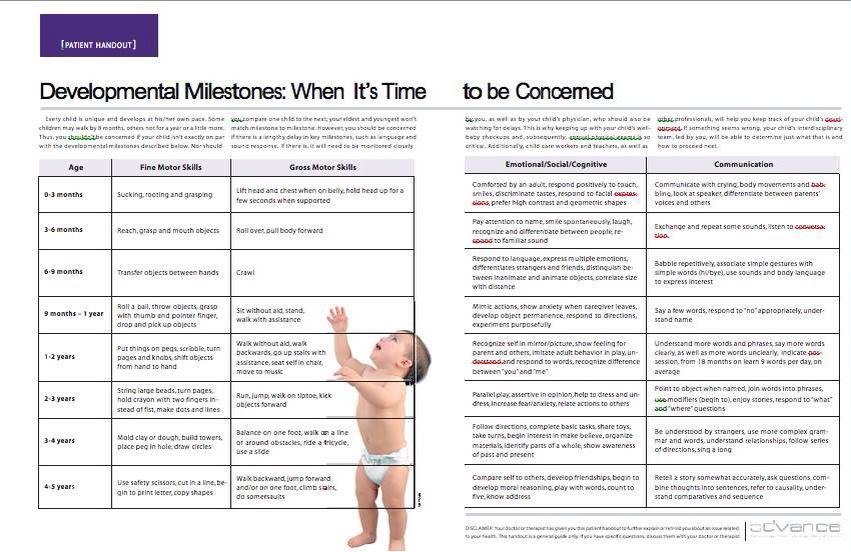 Learn more about all developmental milestones by age.
Learn more about all developmental milestones by age.
Gross motor development milestones: General physical activity guidelines for children ages 0 to 5 years
Newborn to 2 months
- Turns head to both sides while on back
- Lifts head and able to turn to both sides while on belly
- Head lag with pull to sit
- Kicking both legs and moving both arms equally while on back
- Performs tummy time on floor regularly
3-4 months
- Raises head in line with trunk when pulled to sit
- Pushes up on forearms and turn head side to side while on belly
- Tolerates tummy time well
- Rolls from belly to back
5 months
- Rolls from back to belly
- Brings feet to mouth laying on back
- Pushes up on hands with arms extended while on belly
- Pivots in a circle while on belly to each side
6-8 months
- Sits alone
- Reaches for toys to play in sitting
- Catches self with loss of balance in sitting
- Crawls on belly
9-11 months
- Moves between laying down and sitting upright without help
- Crawls on hands and knees
- Pulls to a standing position with one foot leading
- Cruises around furniture
- Walks with two hands held
11-12 months
- Walks with one hand held
- Stands alone for a few seconds
13-14 months
- Crawls up stairs
- Stands up from the floor without support
- Walks alone well
- Squats and stands back up without holding onto support
15-18 months
- Walks up stairs with hands or rails to help
- Crawls down the stairs (on belly, feet first)
- Can run, though falls easily
- Kicks a ball forward
2 years
- Walks and runs fairly well
- Jumps in place with both feet off the ground
- Walks up and down stairs alone
- Kicks a ball with either foot
3 years
- Balance on one foot for a few seconds
- Jump forward 10-24 inches
- Catches a large ball
- Rides a tricycle
By 4 years
- Can run, jump and climb well, is beginning to skip
- Hops proficiently on one foot
- Can do hopscotch
- Catches a ball reliably
- Begins somersaults
By 5 years
- Skips on alternate feet and jump rope
- Begins to skate and swim
- Rides bicycle with/without training wheels
- Climbs well
This information is a general guide to help you determine if your child is progressing at the rate expected for his or her age. Please keep in mind that each child is unique and develops skills at their own rate.
Please keep in mind that each child is unique and develops skills at their own rate.
Physical activity recommendations
By exploring many different types of movement, your child can build the confidence, motivation and physical competence to engage in an active lifestyle.
According to the American Heart Association, a daily dose of at least 60 minutes of moderate-to-vigorous physical activity is recommended for children ages six to seventeen years old. Infants and toddlers are recommended to get 180 minutes of activity spread throughout the day based on the American Academy of Pediatrics. It is suggested that both structured play as well as unstructured play should be incorporated throughout the day.
Ideally, children should participate in 60 minutes of continuous activity. However, for both older children and toddlers the daily amount of activity can be split up throughout the day. For example, two 30-minute segments or four 15-minute segments for children is still beneficial. Whether you’re at home or on the playground, here are some activities, that with proper guidance, may encourage your child to get moving: •
Whether you’re at home or on the playground, here are some activities, that with proper guidance, may encourage your child to get moving: •
Indoor:
- Infants/toddlers: crawling and walking over various surfaces such as creating obstacles with pillows and blankets; sitting with support at torso on an exercise ball, mommy/daddy and me classes (yoga, tumbling, swimming)
- Children: bounce house play, jump rope activities, yoga, dance, gymnastics, cheerleading
Outdoor:
- Infants/toddlers: mommy/daddy and me swim classes; water play in buckets or playing at water tables; infant/toddler swings or slides at the playground; obstacles over various surfaces such as gravel, grass
- Children: swimming, sprinkler water play, water parks, marco polo, ice skating, snow tubing, sledding, roller skating, skateboarding, playgrounds, riding scooters, tricycle and bicycle riding, hiking, jumping and hop scotch activities, soccer, baseball, swinging
Our therapy programs can also help bring out the best in your child.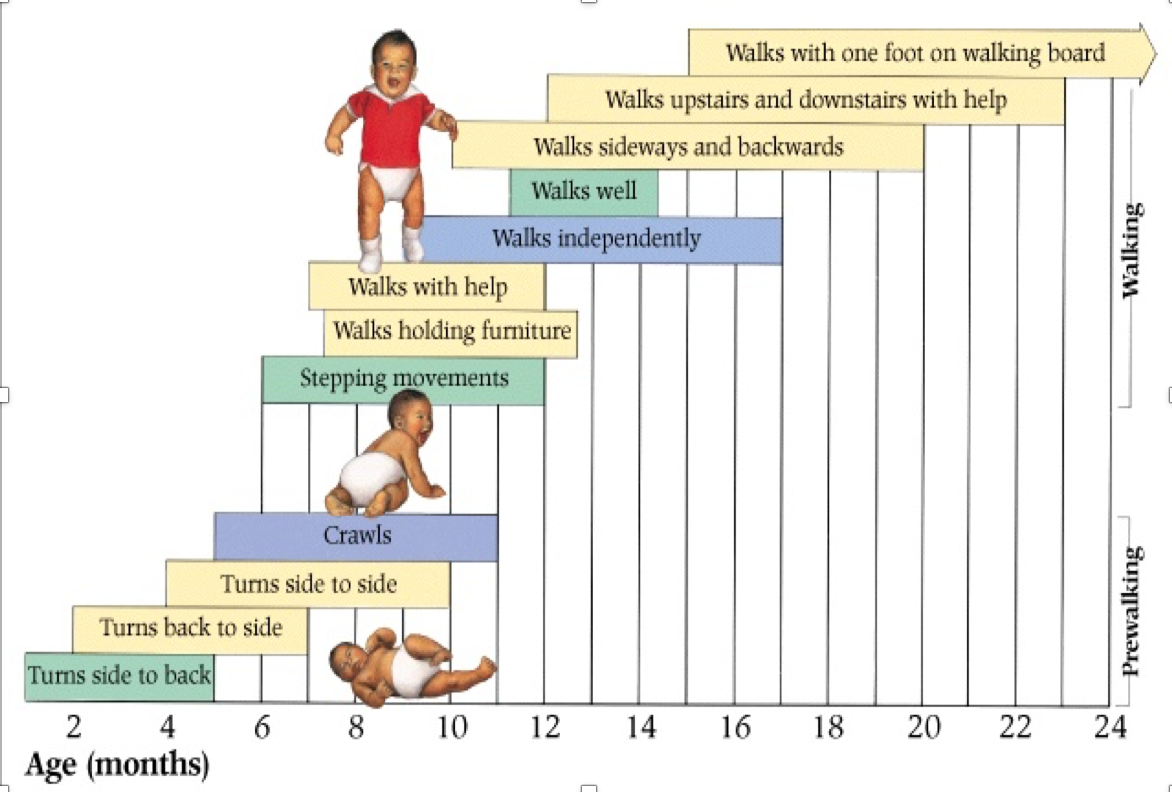 From aquatic therapy, to sports therapy and more, our team takes an integrated approach, using the right therapy or therapies your child needs at the right stage in their development. We can help your child learn or regain the skills they need to be successful during everyday activities and participate with peers.
From aquatic therapy, to sports therapy and more, our team takes an integrated approach, using the right therapy or therapies your child needs at the right stage in their development. We can help your child learn or regain the skills they need to be successful during everyday activities and participate with peers.
Problems with reaching developmental milestones? How to improve your child’s gross motor skills
If you have concerns regarding your child’s development or your child is regularly missing development milestones, physical therapy can assess development and address concerns. If you are concerned about your child’s development of gross motor skills, a physician or therapist may be able to assist with an evaluation.
Physical therapists can provide a comprehensive examination of your child’s strength, balance, coordination and gross motor skills in order to determine barriers to safe body movement. We provide therapeutic activities that are engaging and specific to a child’s age, cognitive status, ability level and interests.
To make an appointment with a pediatric physical therapist, call one of these locations:
Information provided by Kristen McBee PT, DPT; Anisha Craft PT, DPT, PCS; Renee Leiby PT, DPT and Jan Steinberger PT, DPT.
Fine motor skills: birth to 2 years
What are fine motor skills?
Generally thought of as the movement and use of hands and upper extremities, fine motor skills include reaching, grasping and manipulating objects with your hands. Fine motor skills also involve vision, specifically visual motor skills, often referred to hand-eye coordination. Visual-motor skills are needed to coordinate hands, legs, and the rest of the body.
The difference between gross and fine motor skills pertains to the muscles being used. Gross motor skills refer to the large muscles and fine motor skills refer to the smaller muscles. Babies and toddlers need a lot of playtime and practice to develop those small muscles needed for fine motor control.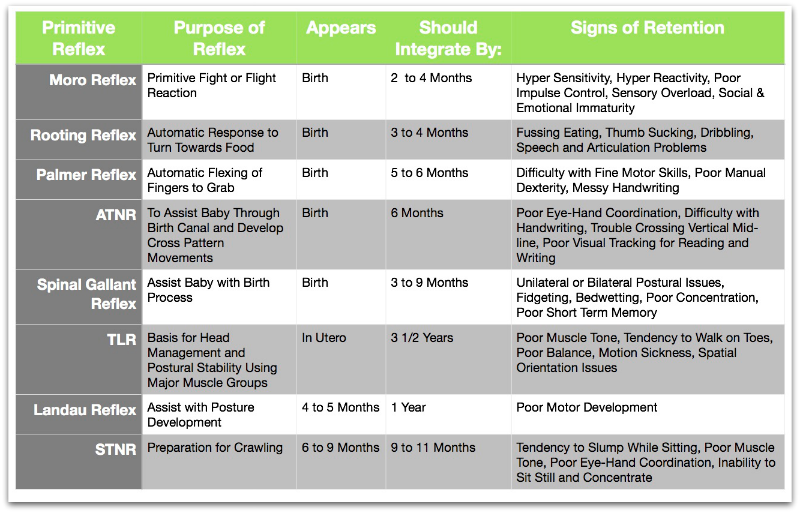 Learn more about all developmental milestones by age.
Learn more about all developmental milestones by age.
Developmental milestones: Activities for infants and toddlers to build fine motor skills
This is a list of fine motor skills children should demonstrate between the ages of 0-2 years.
0-3 months
- Brings hands to mouth
- Moves arms
- May swing arms at toys
- Hands start to open more
3-6 months
- Holds small object in hand (without thumb tucked in hand)
- Holds hands together
- Reaches for toys with both arms
- Pushes up on arms when on tummy
- Briefly holds a toy like a rattle
- Follows objects with eyes in all directions
6-9 months
- Shakes and bangs rattles
- Brings toys to mouth
- Uses a raking grasp
- Transfers objects from one hand to the other
- Keeps hands open and relaxed most of the time
- Starting to have the ability to pick up small foods like Cheerios
9-12 months
- Able to release an object voluntarily
- Gives toy to a caregiver when asked
- Bangs two toys together
- Turns pages of a book a few pages at a time
- Begins to put objects into a container
- Points to objects
- Stacks 2 blocks
12-18 months
- Claps hands together
- Puts objects and toys into containers
- Waves goodbye
- Uses both hands to play
- Can isolate index finger with other fingers closed
- Scribbles with a crayon
- Beginning to use a spoon and cup
18-24 months
- Can build a block tower using 3-4 blocks
- Puts rings on a ring stacker
- Turns pages of a book one at a time
- Begins holding crayons with finger tips and thumb
2 to 5 years
Additional ways to help infants develop fine motor skills
You can help your infant develop MOTOR SKILLS by:
- “Tummy Time”… An important concept in motor skills development for children ages 0-2 years is what is known as “prone skills.
 ” Prone refers to lying on your stomach; many therapists call this “tummy time.” A young baby needs to spend playtime in “prone.” Tummy time helps develop postural control and strength to provide stability for hands and fingers. This core stability helps support the development of fine motor skills. Foundational fine motor skills are developed through gross motor skills such as playing in prone, rolling over, sitting up, and crawling.
” Prone refers to lying on your stomach; many therapists call this “tummy time.” A young baby needs to spend playtime in “prone.” Tummy time helps develop postural control and strength to provide stability for hands and fingers. This core stability helps support the development of fine motor skills. Foundational fine motor skills are developed through gross motor skills such as playing in prone, rolling over, sitting up, and crawling.
A 3-6-month-old learns to push up on their elbows in prone and eventually is able to push up onto their hands. These activities are the beginnings of shoulder stability and arch development in the hands, which are used later on for strength and coordination activities, such as pitching a ball, or precise activities, such as writing with a pencil.
Tummy time also allows for floor time and limits time spent in equipment such as bouncers, infant seats, or swings.
As the development of vision and the sense of touch is important to the development of motor skills, children need to be able to see and feel what is in their hands in order to interact with or manipulate objects.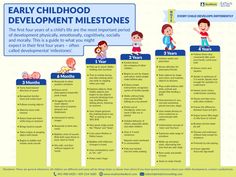
Learn more about how tummy time can help your baby
Help your infant develop VISUAL SKILLS by:
- Getting close… Young babies like to look at faces. A parent’s face is very expressive and possesses contrast which encourages babies to focus and use their visual skills. Position your face about 12″ from your baby’s face. Sing, talk and make silly faces!
- Choosing color… As babies get to be 3-6 months old they begin to enjoy objects with increasing color. Three-month-olds often like “cool colors”- lemon yellow, sky blue and lime green. Six-month-olds are getting ready for brighter colors – hot pink, red and orange.
- Exposing your baby to different and enriching visual environments… If you usually have an infant seat in the den, try other rooms so your baby can have different views. If you often carry your baby in a cradle hold through the house, alternate and carry your baby at your shoulder level so he/she can view the world with an upright head posture.

Help your infant develop SENSORY SKILLS by:
- Incorporate multiple senses…When interacting with your baby remember all the senses: touch (tactile), movement (vestibular), body awareness (proprioceptive), sight, smell, hearing, and taste. Play mats with different textures and touch and feel books offer different tactile experiences. Rocking, swaying, and gentle bouncing provide varied movement experiences. As mentioned earlier using toys with different colors and playing in different environments offers different visual experiences. Using lightly scented lotions or letting you baby smell garden herbs can stimulate sense of smell. Listening to music and playing with instruments are good ways to provide auditory input. Once your baby is eating a variety of solid foods, at around five to six months of age, experimenting with a variety of tastes, textures, and colors is a great way to broaden her culinary (and sensory) horizons.

- Positioning… Our senses of vision, hearing, touch, taste and smell are all developing in a young infant. We also have a “positional sense”; this helps us to define if our body is moving, and where we are in space (sitting up or lying on our stomach). This positional sense is why babies like to be rocked. To help them have an enriched environment, alternate rocking with swaying, try different rocking chairs, and change the baby’s position – swaddled in a blanket, upright on your shoulder, or lying on their stomach across your lap. Go for walks with your baby in a baby-wearing carrier or backpack for stimulation.
- Massaging… For development of touch sense or tactile awareness, provide your infant with massage to arms, legs and trunk. You can use baby lotion or oils if you like. Many YMCAs and other organizations offer classes for infant massage. This activity is great for bonding time with your child.
How to improve your child’s fine motor skills
If your child is regularly missing development milestones, occupational therapy addresses challenges related to cognitive, daily living, motor, sensory processing, social and visual/perceptual skill development.
Occupational therapists at CHoR can provide a comprehensive examination of your child’s strength, balance, coordination and fine motor skills in order to determine barriers to safe body movement. We provide therapeutic activities that are engaging and specific to a child’s age, cognitive status, ability level and interests. We strive to help a child and his or her family succeed through developing strategies unique to a child’s specific needs and abilities.
To make an appointment with a pediatric therapist, call one of these locations:
Information provided by Sallie Tidman, OT/L, Director of Therapy Services, and occupational therapist’s Katie Bobbit, Megan Stratton, and Melanie Koch
Gross Motor Milestones – Therapies For Kids
What are Gross Motor Milestones?
Your child’s ability to control movements and respond to his/her environment begins to develop even before birth. Each baby is unique and grows at his/her own rate.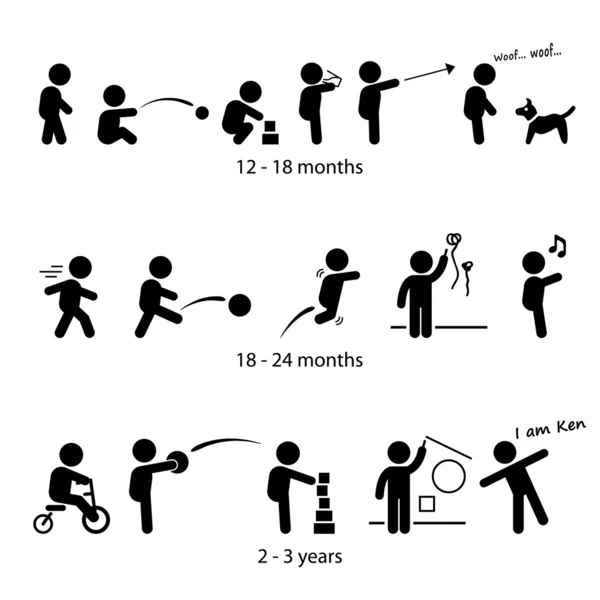 That is why there is a wide variety of “normal” in development. Although this is a gradual, individualised
That is why there is a wide variety of “normal” in development. Although this is a gradual, individualised
process, most babies do go through a series of developmental milestones around certain ages.
The purpose of this checklist is to provide a reference to help guide you through your child’s development and what to expect at certain stages.
Birth-2 months
Raises head slightly off floor or bed when on stomach
- Holds head up momentarily when supported
- Alternates kicking legs when on back
- Arm thrusts in play
3-5 months
- Lifts head and chest when on stomach (props on forearm)
- Head control improving
- Some head-bobbing in supported sitting
- Rolls from side to side
- Rolls from stomach to back
- Sits briefly with arm support
- Random batting at objects
- Hands to midline
- Makes crawling movements
6-8 months
- Reaches to objects on stomach
- Pivots around when on stomach
- Pulls self forward on stomach
- Rolls from back to stomach
- Sits alone briefly
- Moves from sitting to lying on stomach
- Stands with support
- Assumes quadruped and rocks
9-11 months
- Sits alone with trunk rotation
- Pivots and scoots in sitting
- Creeps or crawls
- Pulls to stand
- Cruises
- Stands alone momentarily
12-15 months
- Assumes tall kneeling
- Walks on knees
- Walks independently without support
- Able to stand without support
- Creeps up stairs
- Able to start, stop and turn without falling while walking
- Crawls up on chairs or other furniture
- Runs
16-18 months
- Walks up one step at a time with hand held or railing
- Creeps down stairs
- Walks with a heel-toe pattern seldom falls
- Walks sideways and backward
- Run stiffly
- Stands on one foot with help
- Kicks large ball forward after a demonstration
- Manages riding toys
- Good balance and coordination
19-24 months
- Walks down one step at a time with rail or hand-holding
- Squats in play and stands back up
- Jumps in place
- Kicks a stationary ball
- Jumps off 12-inch box with 1 foot leading
- Walks on balance beam with 1 foot on/ 1 foot off
- Walks up and down stairs alone
24-29 months
- Walks on balance beam with one hand held
- Stands on balance beam alone
- Walks up stairs one step at a time with no railing
- Runs well
- Briefly stands on one foot
- Jumps from one step with feet together
- Throws ball overhead
- Climbs on play equipment-ladders, slides, etc.

2-3 years
- Walks down stairs step by step without a railing
- Balances on one foot 2-3 seconds
- Jumps forward at least one foot
- Walks on balance beam alone
- Walks on tiptoe when asked
3-4 years
- Walks on balance beam sideways
- Catches a bounced ball
- Rides a tricycle
- Hops on one foot 2-5 times
- Balances on one foot 2-5 seconds
- Consecutive jumping
- Walks up stairs step over step alone
4-5 years
- Balances on one foot 4-8 seconds
- Walks on balance beam in all directions
- Walks down stairs step over step alone
- Kicks a rolling ball
- Catches large and small ball with an outstretched arm
- Throw a small ball overhand
5-6 years
- Balances on one foot 10 seconds
- Skips
- Rides a bike with or without training wheels
- Begins to jump rope
- Hops on one foot ten times
- Catches bounced or thrown ball with hands
- Walks on heals when asked
- Swings on a swing, pumping by self
What Therapies for Kids can do
If you have any concerns regarding your child’s Gross Motor development we can provide:
- Assessment of your child’s motor skills
- Reassurance and further information on gross motor skills
- Advice on promoting motor development
- Referral to an appropriate medical practitioner if necessary
What you can do
You as parents and caregivers are the best at determining whether your child is having difficulties in their development.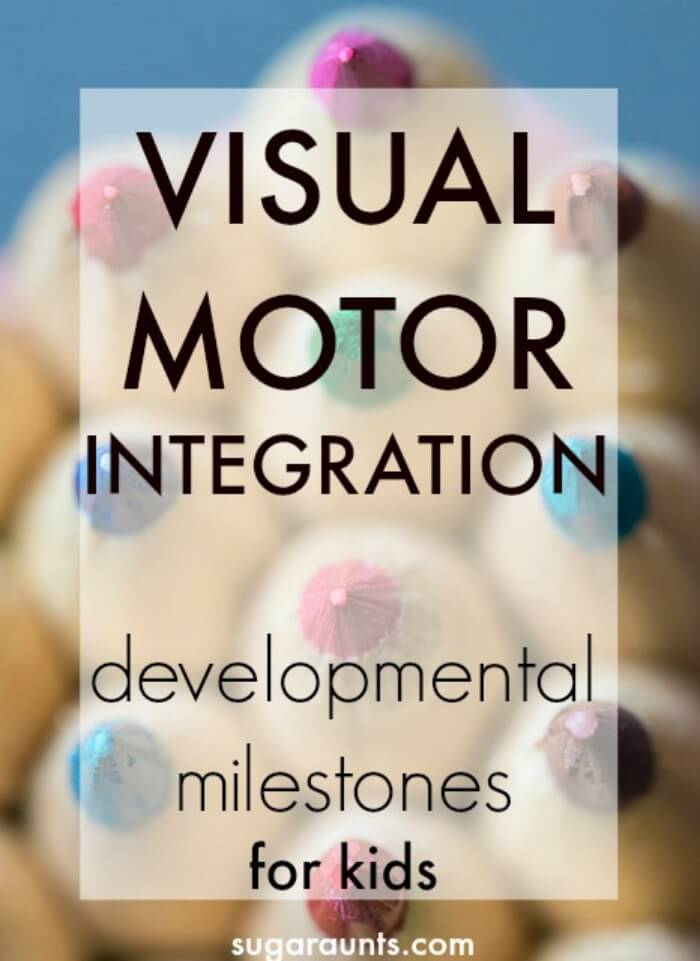 Trust your judgment! If you have concerns, don’t hesitate to bring them to the attention of your doctor, community nurse, or paediatric physiotherapist. Give your child multiple opportunities to practice motor skills.
Trust your judgment! If you have concerns, don’t hesitate to bring them to the attention of your doctor, community nurse, or paediatric physiotherapist. Give your child multiple opportunities to practice motor skills.
newborn development: MedlinePlus Medical Encyclopedia
Infant development is most often divided into the following areas:
- Cognitive
- Language
- Physical, such as fine motor skills (holding a spoon, pincer grasp) and gross motor skills (head control, sitting, and walking)
- Social
PHYSICAL DEVELOPMENT
An infant’s physical development begins at the head, then moves to other parts of the body. For example, sucking comes before sitting, which comes before walking.
Newborn to 2 months:
- Can lift and turn their head when lying on their back
- Hands are fisted, the arms are flexed
- Neck is unable to support the head when the infant is pulled to a sitting position
Primitive reflexes include:
- Babinski reflex, toes fan outward when sole of foot is stroked
- Moro reflex (startle reflex), extends arms then bends and pulls them in toward body with a brief cry; often triggered by loud sounds or sudden movements
- Palmar hand grasp, infant closes hand and “grips” your finger
- Placing, leg extends when sole of foot is touched
- Plantar grasp, infant flexes the toes and forefoot
- Rooting and sucking, turns head in search of nipple when cheek is touched and begins to suck when nipple touches lips
- Stepping and walking, takes brisk steps when both feet are placed on a surface, with body supported
- Tonic neck response, left arm extends when infant gazes to the left, while right arm and leg flex inward, and vice versa
3 to 4 months:
- Better eye-muscle control allows the infant to track objects.

- Begins to control hand and feet actions, but these movements are not fine-tuned. The infant may begin to use both hands, working together, to accomplish tasks. The infant is still unable to coordinate the grasp, but swipes at objects to bring them closer.
- Increased vision allows the infant to tell objects apart from backgrounds with very little contrast (such as a button on a blouse of the same color).
- Infant raises up (upper torso, shoulders, and head) with arms when lying face down (on tummy).
- Neck muscles are developed enough to allow the infant to sit with support, and keep head up.
- Primitive reflexes have either already disappeared, or are starting to disappear.
5 to 6 months:
- Able to sit alone, without support, for only moments at first, and then for up to 30 seconds or more.
- Infant begins to grasp blocks or cubes using the ulnar-palmar grasp technique (pressing the block into palm of hand while flexing or bending wrist in) but does not yet use thumb.

- Infant rolls from back to stomach. When on tummy, the infant can push up with arms to raise the shoulders and head and look around or reach for objects.
6 to 9 months:
- Crawling may begin
- Infant can walk while holding an adult’s hand
- Infant is able to sit steadily, without support, for long periods of time
- Infant learns to sit down from a standing position
- Infant may pull into and keep a standing position while holding onto furniture
9 to 12 months:
- Infant begins to balance while standing alone
- Infant takes steps holding a hand; may take few steps alone
SENSORY DEVELOPMENT
- Hearing begins before birth, and is mature at birth. The infant prefers the human voice.
- Touch, taste, and smell, mature at birth; prefers sweet taste.
- Vision, the newborn infant can see within a range of 8 to 12 inches (20 to 30 centimeters). Color vision develops between 4 to 6 months.
 By 2 months, can track moving objects up to 180 degrees, and prefers faces.
By 2 months, can track moving objects up to 180 degrees, and prefers faces. - Inner ear (vestibular) senses, the infant responds to rocking and changes of position.
LANGUAGE DEVELOPMENT
Crying is a very important way to communicate. By the baby’s third day of life, mothers can tell their own baby’s cry from that of other babies. By the first month of life, most parents can tell if their baby’s cry means hunger, pain, or anger. Crying also causes a nursing mother’s milk to letdown (fill the breast).
The amount of crying in the first 3 months varies in a healthy infant, from 1 to 3 hours a day. Infants who cry more than 3 hours a day are often described as having colic. Colic in infants is rarely due to a problem with the body. In most cases, it stops by 4 months of age.
Regardless of the cause, excessive crying needs a medical evaluation. It can cause family stress that can lead to child abuse.
0 to 2 months:
- Alert to voices
- Uses range of noises to signal needs, such as hunger or pain
2 to 4 months:
4 to 6 months:
- Makes vowel sounds (“oo,” “ah”)
6 to 9 months:
- Babbles
- Blows bubbles (“raspberries”)
- Laughs
9 to 12 months:
- Imitates some sounds
- Says “Mama” and “Dada,”, but not specifically for those parents
- Responds to simple verbal commands, such as “no”
BEHAVIOR
Newborn behavior is based on six states of consciousness:
- Active crying
- Active sleep
- Drowsy waking
- Fussing
- Quiet alert
- Quiet sleep
Healthy babies with a normal nervous system can move smoothly from one state to another.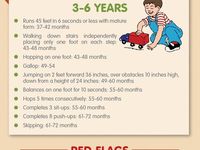 Heart rate, breathing, muscle tone, and body movements are different in each state.
Heart rate, breathing, muscle tone, and body movements are different in each state.
Many bodily functions are not stable in the first months after birth. This is normal and differs from infant to infant. Stress and stimulation can affect:
- Bowel movements
- Gagging
- Hiccupping
- Skin color
- Temperature control
- Vomiting
- Yawning
Periodic breathing, in which breathing starts and stops again, is normal. It is not a sign of sudden infant death syndrome (SIDS). Some infants will vomit or spit up after each feeding, but have nothing physically wrong with them. They continue to gain weight and develop normally.
Other infants grunt and groan while making a bowel movement, but produce soft, blood-free stools, and their growth and feeding are good. This is due to immature abdominal muscles used for pushing and does not need to be treated.
Sleep/wake cycles vary, and do not stabilize until a baby is 3 months old. These cycles occur in random intervals of 30 to 50 minutes at birth.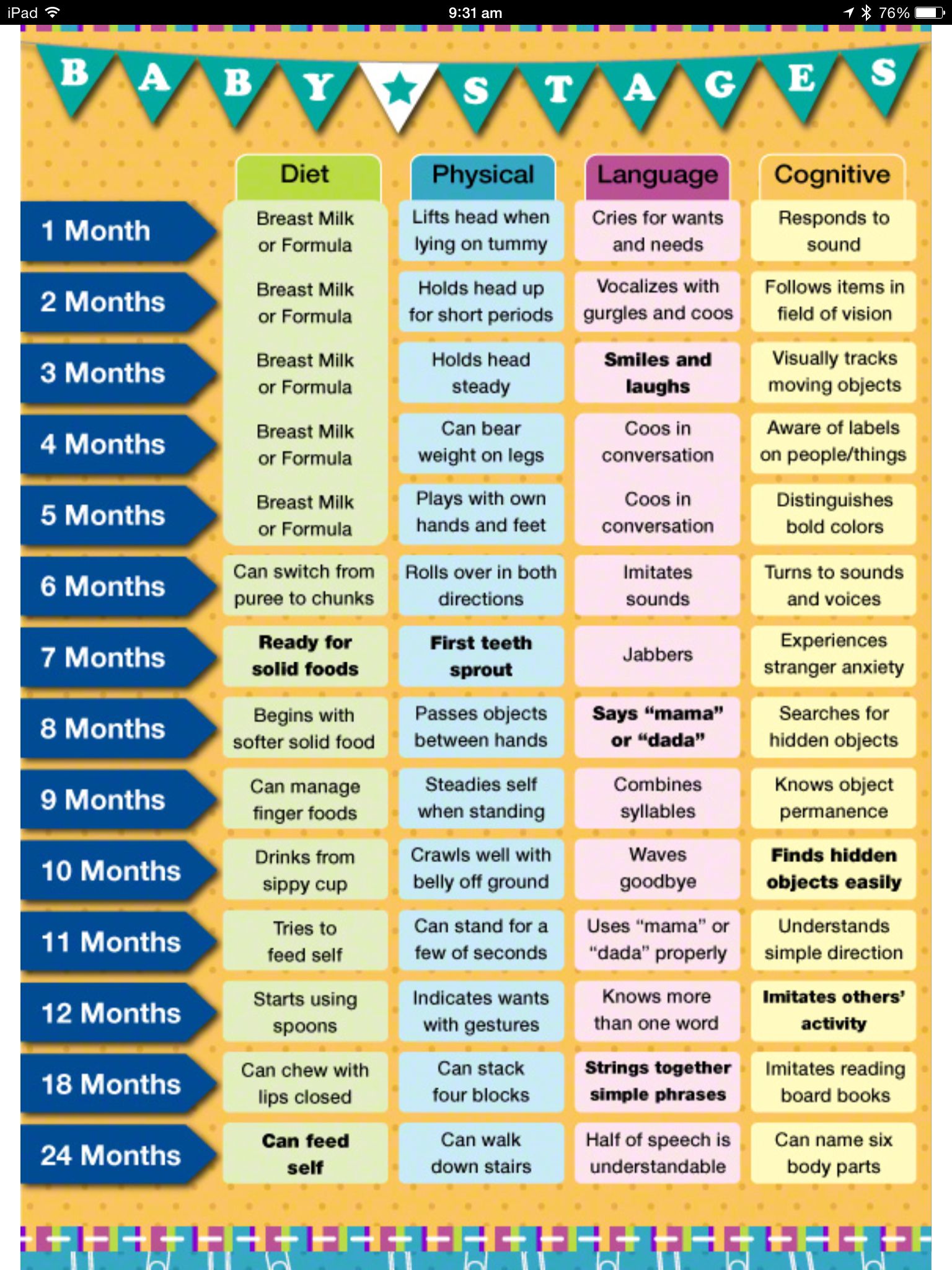 Intervals gradually increase as the infant matures. By age 4 months, most infants will have one 5-hour period of uninterrupted sleep per day.
Intervals gradually increase as the infant matures. By age 4 months, most infants will have one 5-hour period of uninterrupted sleep per day.
Breast-fed infants will feed about every 2 hours. Formula-fed infants should be able to go 3 hours between feedings. During periods of rapid growth, they may feed more often.
You do not need to give water to a baby. In fact, it could be dangerous. An infant who is drinking enough will produce 6 to 8 wet diapers in a 24-hour period. Teaching the infant to suck a pacifier or their own thumb provides comfort between feedings.
SAFETY
Safety is very important for infants. Base safety measures on the child’s developmental stage. For example, around age 4 to 6 months, the infant may begin to roll over. Therefore, be very careful while the baby is on the changing table.
Consider the following important safety tips:
- Be aware of poisons (household cleaners, cosmetics, medicines, and even some plants) in your home and keep them out of your infant’s reach.
 Use drawer and cupboard safety latches. Post the national poison control number — 1-800-222-1222 — near the phone.
Use drawer and cupboard safety latches. Post the national poison control number — 1-800-222-1222 — near the phone. - DO NOT allow older infants to crawl or walk around in the kitchen while adults or older siblings are cooking. Block the kitchen off with a gate or place the infant in a playpen, highchair, or crib while others cook.
- DO NOT drink or carry anything hot while holding the infant to avoid burns. Infants begin waving their arms and grabbing for objects at 3 to 5 months.
- DO NOT leave an infant alone with siblings or pets. Even older siblings may not be ready to handle an emergency if it occurs. Pets, even though they may appear to be gentle and loving, may react unexpectedly to an infant’s cries or grabs, or may smother an infant by lying too closely.
- DO NOT leave an infant alone on a surface from which the child can wiggle or roll over and fall off.
- For the first 5 months of life, always place your infant on their back to go to sleep. This position has been shown to reduce the risk for sudden infant death syndrome (SIDS).
 Once a baby can roll over by himself, the maturing nervous system greatly reduces the risk for SIDS.
Once a baby can roll over by himself, the maturing nervous system greatly reduces the risk for SIDS. - Know how to handle a choking emergency in an infant by taking a certified course through the American Heart Association, the American Red Cross, or a local hospital.
- Never leave small objects within an infant’s reach, infants explore their environment by putting everything they can get their hands on into their mouth.
- Place your infant in a proper car seat for every car ride, no matter how short the distance. Use a car seat that faces backward until the infant is at least 1 year old AND weighs 20 pounds (9 kilograms), or longer if possible. Then you can safely switch to a forward facing car seat. The safest place for the infant’s car seat is in the middle of the back seat. It is very important for the driver to pay attention to driving, not playing with the infant. If you need to tend to the infant, safely pull the car over to the shoulder and park before trying to help the child.

- Use gates on stairways, and block off rooms that are not “child proof.” Remember, infants may learn to crawl or scoot as early as 6 months.
CONTACTYOUR HEALTH CARE PROVIDER IF:
- The infant does not look good, looks different from normal, or cannot be consoled by holding, rocking, or cuddling.
- The infant’s growth or development does not appear normal.
- Your infant seems to be “losing” developmental milestones. For example, if your 9-month-old was able to pull to standing, but at 12 months is no longer able to sit unsupported.
- You are concerned at any time.
Fine Motor Skills – Infant Developmental Milestones
Fine Motor Skills
“Fine motor” refers to the movements we make with the small muscles of the hands. Children start to use their hands right at birth to explore their own bodies and the world around them. Their fine motor skills develop as their whole body starts to move and become more stable.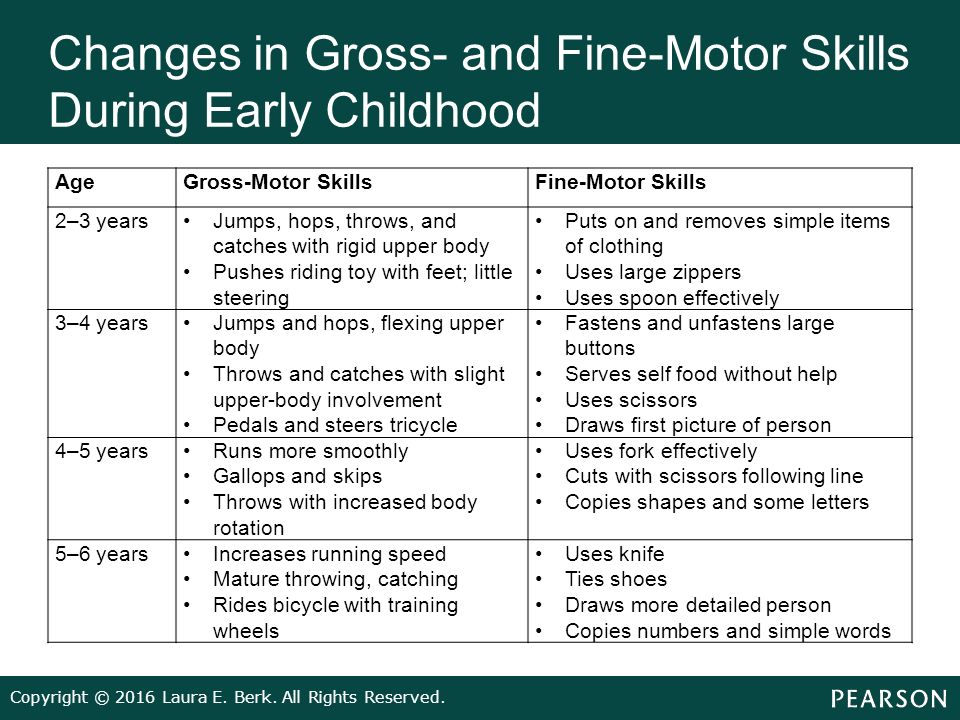 They also learn to do more things with their hands as their cognitive and social/emotional skills improve.
They also learn to do more things with their hands as their cognitive and social/emotional skills improve.
Below are some of the typical developmental milestones for fine motor skills. After each age group, you can find some “red flags” that might indicate a problem.
Between the ages of 0-4 months, your baby will:
- Turn her head toward sounds and voices
- Stare at bright objects and follow them with his eyes
- Move her arms together and apart
- Bring his hands to his mouth, and possibly suck on his own hands or fingers
- By 4 months, lift his head and shoulders off the floor when laying on his tummy
Between the ages of 4-8 months, your baby will:
- Grab onto objects within her reach
- Roll over to explore and get to objects
- Prop himself up on his arms when laying on his tummy
- Sit independently for brief periods
- Pass objects from one hand to the other hand
Red Flags for Fine Motor Development (0-8 months)
If you notice some of the following things about your baby by the time she is 6-8 months old, you may want to talk to your doctor, or to another health professional such as an occupational therapist or a physiotherapist.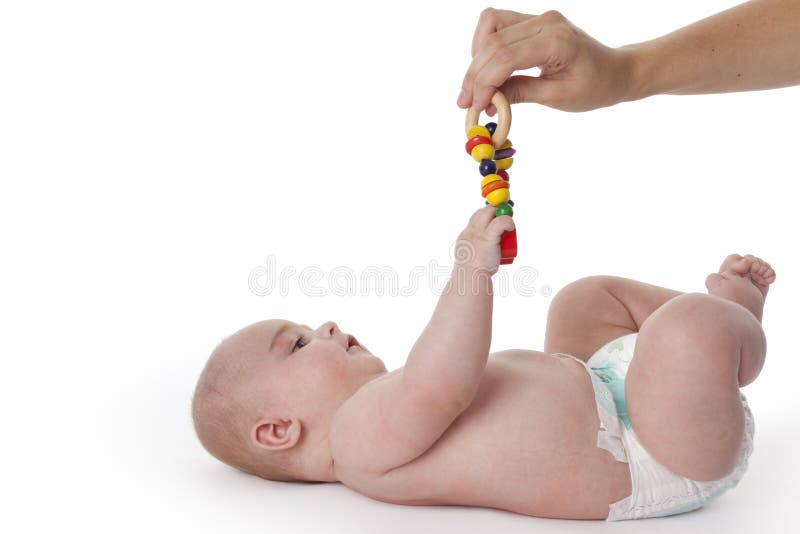
- She still keeps one or both hands clenched in a fist
- His arms seem very stiff
- She is not able to prop herself up when laying on his tummy
- She is not able to pick up objects within her reach
- He is not able to sit by himself for short periods
- He is not able to roll over to get objects
Between the ages of 8-12 months, your baby will:
- Reach, grab, and put objects in her mouth
- Pinch small objects (e.g. cheerios) with thumb and pointer finger
- Move objects from one hand to the other
- Drop and pick up toys
- Bang two objects together
- Let go of objects on purpose
- Put things into containers (with large openings) and take them out again
- Bite and chew toys
- Hold a spoon (but not yet feed herself)
- Hold his own bottle
- Hold out an arm or leg to help with dressing
- Wave hello or goodbye
Red Flags for Fine Motor Development (12 months)
If you notice some of the following things about your child by the time he is 12 months old, you may want to talk to your doctor, or to another health professional such as an occupational therapist or a physiotherapist.
- He is not able to grasp toys and let them go again
- She does not bring toys to her mouth or bang them together
- He is not able to bring his hands together at the middle of his body (e.g. clapping)
- She is not able to feed herself finger foods, using her thumb and pointer finger to pick up food
- His movements seem shaky or stiff
- He is not able to move around on the floor to get the toys he wants
- She is not able to put objects into a large container
- His hands are kept in a fisted position
- She is not able to hold her bottle by herself
If you have concerns about your child at any age, please feel free to contact us to speak to a professional. You can also make a referral to our centre at anytime.
Is Your Baby’s Physical Development on Track?
You know your child best. So, it’s important you share your concerns with your pediatrician if you think your little one’s development isn’t exactly on track.
Typically, children develop motor skills from the head down. First comes head control and then control over the upper body. The typical pattern for motor milestones is rolling over, then sitting, pulling up, standing, walking, and climbing. Small, fine motor skills, such as grasping objects, putting blocks in a cup, and scribbling are important milestones, too.
Physical developmental delays or
early motor delays are terms used to describe when children are not meeting critical physical milestones in the first months and years of life – how well and soon they move and interact with their environment. These delays can be a sign of something more serious, so it is important to talk with your child’s pediatrician about them.
Signs of a Physical Developmental or Early Motor Delay
-
Delayed rolling over, sitting, or walking
Poor head and neck control
Muscle stiffness or floppiness
Speech delay
Swallowing difficulty
Body posture that is limp or awkward
Clumsiness
Muscle spasms
Common Concerns from Parents about Delayed Physical Development
My child doesn’t seem to be growing the way he should.

My child seems very stiff and tight in the way she moves.
My child is weak and limp like a rag doll.
My child isn’t keeping up with children of the same age when they play together.
My child seems to get tired very quickly.
If either of the above lists of signs and concerns sound familiar or if you have other any other worries, speak up! Usually a child who is late doing certain activities catches up to other children. But sometimes, developing late is the sign of a health condition. An estimated 400,000 babies born each year in the United States are at risk for some form of neuromuscular condition, and one in 40 are actually born with an early motor delay. Spotting these signs and finding the health condition as early as possible will help your child get the care he or she needs.
Physical Developmental Delays: What to Look For
When trying to spot an early motor delay, it is helpful to know the signs of typical and atypical physical development. The American Academy of Pediatrics (AAP), created an online tool for parents called
The American Academy of Pediatrics (AAP), created an online tool for parents called
Physical Developmental Delays: What to Look For.
This tool features an interactive experience to learn more about physical developmental delays in children 5 and under and can serve as a guide if you have a feeling that something is wrong. You are also able to create a checklist of items to help start a conversation with your child’s pediatrician.
Note: This tool only focuses on a child’s physical development. If you’re worried about other developmental issues, like social, emotional, communication, or learning, visit the
Learn the Signs. Act Early. Also, keep in mind that if your child was born prematurely (before 37 weeks of pregnancy) he or she may develop later than other children the same age. See
Preemie Milestones.
Next Step: Talk with Your Pediatrician
When you express concerns your child is development to the pediatrician, he or she will listen carefully and may ask you some additional questions.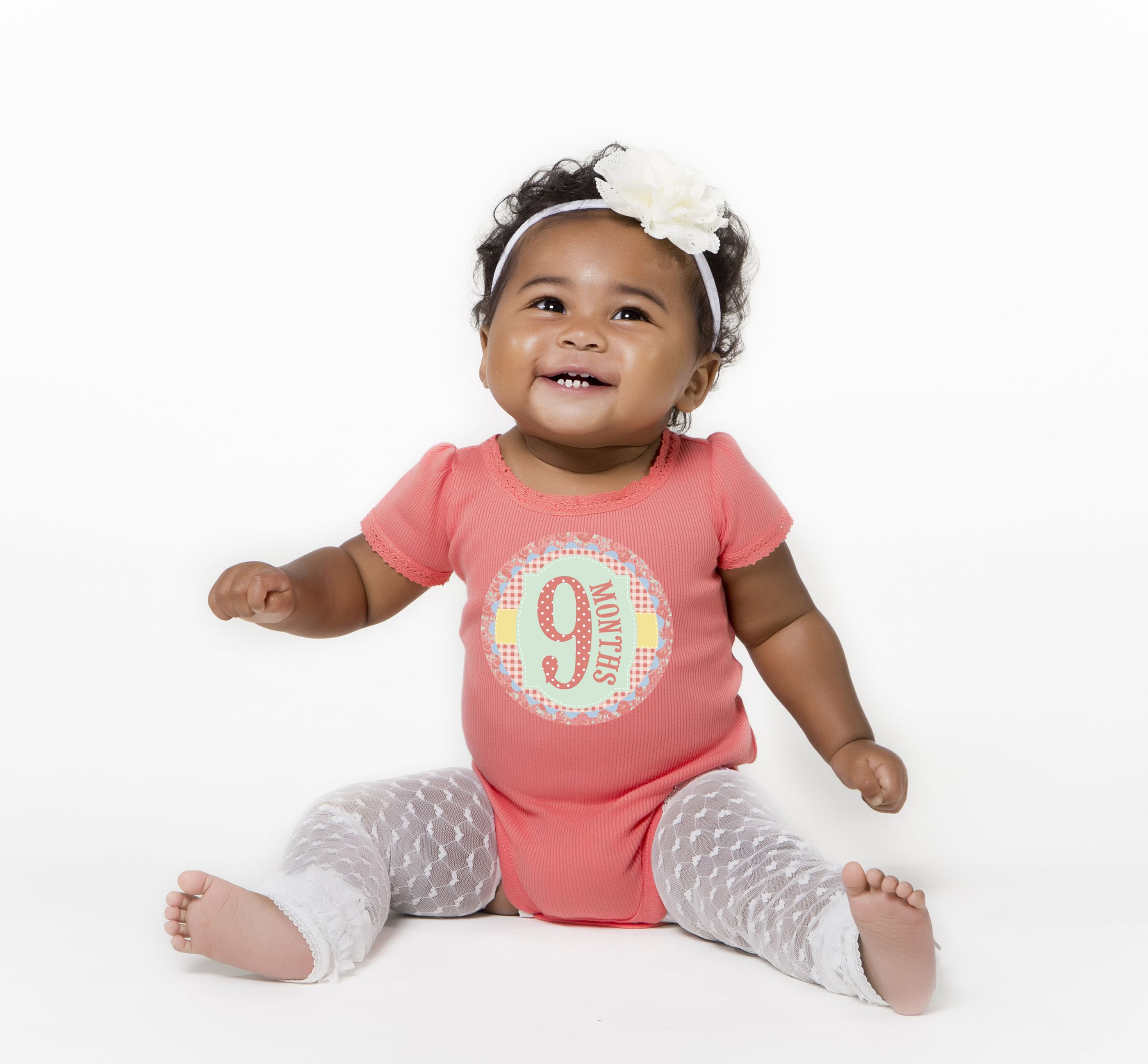 You may also be asked to complete screening questionnaire online or on paper; this is an
You may also be asked to complete screening questionnaire online or on paper; this is an
assessment for developmental delays. Parent observations are an important part of a pediatrician’s evaluation. Pediatricians use parental input on these questionnaires as a basis for further examination and referral. See these
tips from the CDC for talking with your child’s pediatrician about development.
Finding Support if a Health Condition is Identified
If a specific diagnosis is found in your child, your pediatrician can help you connect with special support groups and other resources for parents in your community. Parent support organizations such as
Parent Project Muscular Dystrophy help you figure out what to do, especially in the first few weeks following a diagnosis, and offer you support in parenting a child with a special need. Some other conditions have well organized societies, such as the
National Down Syndrome Society,
United Cerebral Palsy, and the
Muscular Dystrophy Association.
More Information
Movement Milestones: Birth to 3 Months
AAP Motor Delay Tool
Simple Ways to Entertain & Boost Your Baby’s Development at Home
The
Physical Developmental Delay: What to Look For tool was developed by the cooperative agreement number 5 U38 OT000183, funded by the Centers for Disease Control and Prevention. Its contents are solely the responsibility of the American Academy of Pediatrics and do not necessarily represent the official views of the Centers for Disease Control and Prevention or the Department of Health and Human Services.
The information contained on this Web site should not be used as a substitute for the medical care and advice of your pediatrician. There may be variations in treatment that your pediatrician may recommend based on individual facts and circumstances.
90,000 exercise therapy for children – in St. Petersburg next to the metro!
Exercise therapy for kids – we develop by playing!
If a child needs physical therapy, he will work with an instructor in exercise therapy. Such specialists provide assistance in the physical development and restoration of functions in children under 18 years old, from newborns to adolescents. Children come to physical therapy for various reasons, including problems with the musculoskeletal system, sports and rubble injuries, genetic diseases, diseases of the brain, spine or nervous system.Physiotherapy specialists work with children after surgery or injury to improve their mobility during rehabilitation. Exercise therapy can address many mobility problems, including muscle weakness, decreased flexibility, poor posture, difficulty walking, imbalance, and pain on movement.
Exercise therapy helps children improve range of motion, strength, flexibility, coordination and balance. Children learn to control their bodies, increase the range of motor abilities and the quality of daily activities and self-care.
Regardless of the age of the patient, the exercise therapy specialist works with the same basic deficiencies or problems, but in the context of age milestones and norms for the development of mobility and movement in infants, toddlers and children. With infants, instructors work primarily on the development of general motor skills to help them learn to move in the world around them. This includes learning how to roll over, sit, crawl, stand, and walk.
How do I know if my child needs physiotherapy exercises?
Perhaps exercise therapy will be beneficial to health and physical fitness in the following cases:
- After injury (in a fall, during a sporting event)
- Post-operation
- If the child frequently falls, stumbles or loses balance
- If it is difficult for a child to keep up with peers on the playground or at school
- When it is difficult for a child to coordinate their movements, including when performing tasks such as jumping
- If your child chronically complains of pain in the same part of the body
- If your child has a delay in motor development
What is developmental delay?
Developmental delay is diagnosed when a child is found to be more than “slightly behind” in the acquisition of daily motor skills that correspond to developmental control milestones.This term identifies significant lag, and can be used to describe any type of lag in one or more of the following 5 skill areas:
- Fine and gross motor skills
- Cognitive skills (thinking)
- Social and Emotional Skills
- Speech and Language
- Self Service
These delays may or may not be the result of a specific medical condition. For example, a child with Down syndrome is diagnosed at birth or before birth, but may also have developmental delays.This is true for any child with a disability such as autism spectrum disorder or cerebral palsy. However, children without a specific medical condition may also have developmental delays. Early assessment is key. Parents should express any concerns, even the smallest, to their pediatrician in order to confirm or rule out developmental delay.
Preventing developmental delay can be challenging if unrelated to a specific medical condition – its causes may remain unclear.However, once developmental delay is diagnosed, steps need to be taken to prevent further delay or to help the child “catch up”. Since this diagnosis is very diverse, the results of the intervention also vary. It is important to remember that the sooner assistance is provided, the more likely the child will be able to recover and will not continue to lag behind.
Major milestones in child motor development
Delayed motor development occurs when a child does not reach certain “motor milestones” at the expected age.Children usually develop their general motor skills, such as rolling, crawling, and walking, in a predictable sequence and within a predictable amount of time. The milestones in gross motor development are shown in the table below, with expected ages. If the development of motor skills does not meet these milestones, then the exercise therapy specialist can help the child develop the appropriate functions and improve motor skills.
Age | Milestones in motor development |
3-4 months | Keeps the head in different positions |
5-6 months | Rolls over over the tummy onto the back and back onto the belly |
6-7 months | Sits well on its own |
8-10 months | Creeps |
9-11 months | Reaches to get up |
11-14 months | Starts a walk with a support and then walks on its own. |
~ 2 Years | Starts running, jumping and jumping |
~ 3 Years | Learns to stand on one leg |
~ 4-5 years | Learns to jump and jump |
Signs and symptoms of delayed motor development
Parents are often the first to notice that a child is not reaching the above developmental milestones.However, a delay in reaching a milestone does not necessarily mean that a child has a developmental delay. Children need to demonstrate significant developmental delays in one or more areas of development to be diagnosed.
For example, in infancy, a child is initially suspected of developmental delay if general motor milestones are not followed, such as:
- Ability to hold head up at 4 months
- Ability to sit at about 6 months of age
- Ability to walk at the age of about a year.
May be suspected of delayed motor development if children try to master movement skills in various ways. Occasionally, children with motor retardation may have an additional diagnosis, such as hypotension (low muscle tone), which aggravates their movement difficulties.
Motor development in children may often be the first area of delay that parents notice. However, in infants and young children, all areas of development are closely related: a delay in one area can affect progress in another.For example, failing to learn to sit or change position can affect learning or babbling and language development. Sensory problems such as hypersensitivity to touch or an inability to plan and solve problems of how to move can also exacerbate movement difficulties.
Children who have some or all of these problems that interfere with their motor development may also develop a fear of trying new motor skills, which can then lead to social or emotional problems.
How is developmental delay diagnosed?
Parents should talk to their pediatrician about any problems they see in relation to their child’s development. A doctor can identify medical problems that may affect overall development, such as chronic ear infections that impair hearing and affect a child’s speech or balance.
Developmental delay is diagnosed using tests designed to evaluate a child’s movement, communication, play and other behavior compared to other children of the same age.These tests are standardized to determine the normal range of scores for each age. If children are gaining much less than the average for their age, they are at risk of being diagnosed with developmental delays.
Pediatricians routinely perform screening tests during infancy to determine if a child is developing at a rate appropriate for age. Often this happens at the request of parents who suspect that the child does not have the same skills as other children of the same age.The screening test helps determine which children would benefit from a deeper examination. A physical therapist with knowledge of movement development, coordination, and health conditions will conduct an in-depth examination to determine if a child’s motor skills are being delayed, and if so, how much they are.
How can a physiotherapist and exercise therapy specialist help?
The specialist will first assess the child with appropriate tests to determine his strengths and weaknesses.The doctor will discuss observations and concerns with the parents. If your child is diagnosed with developmental delay, your physical therapist will talk with you about your family’s daily routine and environment to find ways to improve and develop your child’s developmental skills.
In addition to assessing the child and the environment in which he moves, the exercise therapy specialist can give detailed instructions on the development of motor skills, step by step, to achieve the set goals. The therapist can guide the child’s movements or give hints to help the child learn a new way of moving.For example, if a child has difficulty getting up to a standing position, the instructor can show him how to bend forward and kick off with his feet. If the child is unable to balance while standing, the instructor can experiment with different support aids so that the child can safely learn new ways to stand.
Also, during the exercise therapy course, the family will be taught what can be done to help the child practice skills during daily activities. The family has the most important influence on a child because they can provide the opportunities they need to achieve each new skill.The exercise therapy specialist will explain how much practice is needed to reach a certain milestone. For example, a child who learns to walk makes a long journey during the day. The instructor can give specific advice on the number and type of activities that are appropriate for the child at each stage of development.
How are the exercises of exercise therapy at the DMC “Aqua-Doctor”:
Most often, babies are given gentle massage, stretching exercises, passive movements to develop joints and muscles, develop the ability to control the head, develop flexibility and balance.For each child in our center, the exercise therapy doctor conducts diagnostics, and, based on the diagnosis, develops an individual exercise therapy course, selects a set of exercises, calculates the duration of the course, the frequency of exercises, and the required load. “Aqua-Doctor” is a unique children’s medical center with special pools, therefore, it is possible to add the healing power of exercise in warm water to the usual procedures of exercise therapy. After consulting an exercise therapy doctor, physiotherapy, a course of massage and osteopathy, or infant swimming classes, combining therapeutic exercises and exercises in water, may be included in the complex of therapeutic measures for a baby, after consulting an exercise therapy doctor.
Physical therapy has a positive effect on the musculoskeletal system, respiratory and cardiovascular system, nervous system, has a beneficial effect on the psychoemotional state of the child, promotes optimal early development.
DMC “Aqua-Doctor” – a modern formula for your child’s health!
The information and prices presented on the site are for reference only and are not a public offer. The services specified in the Price List can be provided in other medical centers of VIRILIS Group of Companies.We ask you to specify in advance the address and cost of services in the round-the-clock contact center by phone +7 (812) 331 88 95
90,000 The child does not crawl on all fours.
02/15/2021
8054
What is crawling on all fours?
This is one of the stages of a baby’s motor development, an element of his motor experience, a sensorimotor algorithm that he uses (or does not do) in order to learn about the world.
WHO defines “hand and knee crawl” as one of six motor milestones.
Motor milestones
- Seat without support
- Crawling on hands and knees
- Standing with someone else’s help
- Walking with someone else’s help
- Self-standing
- Independent walking
WHO considers these milestones to be universal and fundamental for mastering independent vertical movement.
What time do children start to crawl?
This is important!
When the child’s body is ready for this!
The window for achieving the skill of crawling on hands and knees is quite wide: 90,076 from 5.2 to 13.5 months.
Fig. 1. Windows of motor milestones according to WHO
Do all children crawl on all fours?
No. According to the WHO, 4.3% of children do not demonstrate this skill.
What affects this skill:
- Power supply;
- Postponed infections;
- Individual characteristics of the child.
What does not matter:
- Body measurements;
- The gender of the child.
Criteria for registering achievement
- Tried but failed
- Was able to complete
- Refused to execute
Stages of crawling
- Lying on his stomach, leaning on outstretched arms (raises the torso)
- Uses hands to pull forward (bell crawl)
- Uses all four supports (palms and knees), abdomen does not touch the resting surface
- Sits down on all fours
- Get on all fours from any position
- Stands on all fours on his own and sways back and forth
- Attempts to change points of support by moving them (beginning of crawling on hands and knees)
- Alternately and confidently changes support on hands and knees
- Can move backwards on all fours
As you can see from the above, the crawling skill is not acquired overnight.It begins to form from the moment the child first attempts to rise above the support and reach out to what he is interested in.
This is important!
The key is precisely the interest of the child, his motivation. This is the main driving force behind development.
If the child does not crawl, then the parents’ task is to maintain interest in this skill.
It will be a great neglect on the part of adults to ignore the child’s crawling skill and limit his physical activity.
According to neurophysiologist Glen Doman, the acquisition of the ability to crawl at an early age led to the development of writing and civilization. The scientist wrote: “Show us a culture where there are no sexes, and we ourselves will tell you about its primitiveness. And vice versa. Egyptian and Greek floors, Inca floors have survived to this day. And representatives of these cultures performed brain surgeries and created beautiful works of art three thousand years ago. ”
Benefits of crawling
- Strengthening of muscles and formation of the musculoskeletal system
- development of the visual apparatus
- formation of visual-motor coordination
- development of the brain, synaptic, intercellular neural connections
- Establish spatial orientation skills
How to teach a child to crawl?
- Provide a place on the floor where the child can move around in a convenient way
- Protect the area by covering the surface with a non-slip material and removing any unsafe items that a child might swallow, spill, or knock over.Put plugs on the sockets, put the wires in cable channels, etc. Install special restraints on pieces of furniture (plugs, patrols), which either will not allow the child to open the doors / drawers, or will help not to pinch his fingers.
- Create a field for actions. Highlight a drawer (shelf, cabinet, etc.) that is accessible to the baby with items of interest to him. Change them if they no longer attract his attention or they are simply bored.
- Be an example or introduce someone who already knows how to crawl.It is not known what will work: a role model or a competitive spirit.
(0
ratings; article rating 0)
Position reactions
Positional reactions in developmental kinesiology
Position reflexes, long known in the neurology of infants, are reflex postures and reflex movements caused by certain changes in body position.They are modified depending on the stage of development reached, that is, they proceed in several phases. These phases are objective milestones in development.
Since we are talking about complex reactions, from the point of view of terminology it would be better to speak of “positional reactions” instead of “positional reflexes”.
During normal development, the phases of posture reactions correspond to the achieved stage of development of phasic motility and locomotor ontogenesis. It is necessary to emphasize this, since the reactions of the position during the neurological examination make it possible to quickly draw up an indicative picture of the degree of development of the child.
Relationship of the model of posture reactions to the ideal motor development of a child on the example of a test for traction
Seven posture responses are regularly used and can be used already in the neonatal period. They are described below in the order of their informative value.
- Vojta Reaction
(Vojta 1966/67/69) - Traction test
(modified by Vojta) - Papert vertical suspension
(Papert-Isbert 1927) - Collis vertical suspension
(Collis 1954) (Collis vertical, modified by Voita) - Collis horizontal suspension
(Collis 1954) (Collis horizontal, Vojta modified) - Landau reaction
(Landau, A., 1923) - Axillary suspension
Vojta reaction
Summoning: lifting the child from a prone position and quickly rolling over to one side from a vertical to a horizontal position.
1st phase: 1st – 10th week
From the point of view of clinical applicability, the evaluation of the upper limbs is more important.
In this reaction, the upper limbs are evaluated:
- A grasping movement of both hands similar to the Moro reflex, both hands open.
- Flexion of the upper leg at the hip and knee joints, with back flexion at the ankle joint.
- Pronation of the foot and fan-shaped spreading of the toes.
- Extension of the lower leg with back flexion at the ankle, supination and flexion of the toes.
1st phase: 11th – 20th week
The grasping movement similar to the Moro reflex weakens, the arms are still withdrawn, the hands are open.
By the end of the 1st transition phase:
- The arms are bent without tension (only with repetition or excitement, the arms are still abducted like the Moro reflex).
- Legs gradually take a bent position.
- Toes no longer spread apart.
2nd phase from about 4.75 months to the end of the 7th month
- All limbs are flexed without tension.
- Brushes open or loosely closed.
- Feet bent back, mostly turned outward.
- Toes in the middle or bent position.
2nd transition phase after the 7th month until the end of the 9th month
- Arms bent without tension, later stretching forward and to the sides without tension.
- Legs are noticeably extended forward, flexion in the knee joint is reduced.
- Feet bent back.
- Toes in the middle position.
3rd phase after 9th month until 13th / 14th month
- The upper limbs are extended to the sides.
- Feet bent back.
- Once the ability to stand has been achieved, the Voight reaction in healthy children is almost impossible to use anymore. The child can arbitrarily change the posture despite the massive afferent influx.
Instruction
Before performing the manipulation, the child must always open his palms. Otherwise, especially in the perinatal period, as well as in early infancy, a stereotypical flexion position of the arms is adopted, which can be incorrectly assessed as abnormal.
Traction test
This test has been used for decades in diagnostics to assess the position of the head of a child who is pulled from a supine position to an upright sitting position. If the child is pulled up at an angle (approx. 45 degrees to the horizontal plane), then in this unstable position one can observe the reaction of the whole body and limbs.
Care must be taken to engage the grasping reflex of the hands.To do this, put a finger in the palm of the child from the elbow side. The distal part of the forearm is taken with the other finger, without touching the back of the hand. This exteroceptive stimulation would inhibit the grasping reflex.
Starting position: on the back, head in the middle position.
Invocation: Child is slowly pulled upward at an angle of up to 45 degrees.
1st phase from 1st to the end of 6th week
- Head hangs back.
- During the perinatal period, the legs are bent and slightly abducted.
- After the perinatal period: inert flexion of the legs (similar to that observed with axillary suspension or with the Landau reaction in the 1st trimester).
2nd phase from the 7th week to the end of the 6th month
- Head tilt with full torso flexion.
- Leg Curl
Phase 2a (after 3 months of life):
- Head and torso are in line.
- Medium leg bend.
Phase 2b (after 6 months of life):
- The head is tilted forward as much as possible.
- Legs are tucked in to the body as much as possible.
3rd phase in 8th and 9th months
After the 7th month, the flexion of the neck, trunk and legs gradually decreases. From this time on, during the manipulation, there is an active push from the side of the child in the direction of “pulling up”.On the legs, the reduction in flexion is best seen in the knee joints. (The knee is half bent.) The buttocks become a fulcrum: the center of gravity – actively – is shifted towards the buttocks.
4th phase from 9th / 10th month to 14th month
- The child is pulled up.
- The head remains in line with the upper torso.
- Flexion is mainly performed in the lumbosacral transition region.
- Legs abducted and straightened without tension at the knee joints.
Note:
for the assessment of the 3rd and 4th phases, the child should be in a balanced mood, since when screaming, the trunk often performs opisthotonic bends.
Papert vertical suspension (Papert-Isbert 1927)
Starting position: In the first 4-5 months, the position on the back, then on the stomach. The head is in the middle position, the hands should be open.
Evocation: In neonates and young infants, the most proximal thigh is involved, in older infants and young children, the distal thigh or knee joints. Then the child is suddenly turned upright, head down.
1st phase from 1st week to the end of 3rd month
In the first 6 weeks of development:
- Hand wrapping like Moro reflex (phase 1a).
Then (phase 1b):
- Incomplete Moro reflex in the hands (without “grasping”).
- The back of the head is straightened, the pelvis is tilted.
2nd phase from 4th to 5th / 6th month
- Arms extended to the sides and half raised.
- Brushes opened.
- The back of the head and trunk are straightened up to the transition from the chest to the lower back.
- The inclined position of the pelvis decreases.
3rd phase from 7th to 9th / 10th / 12th month
- Hands extended up.
- Brushes opened.
- Symmetrical straightening of the occiput and trunk into the flesh until the transition from the lumbar to the sacral region.
4th phase approx. from the 9th month
The child is trying to actively hold onto the examiner and pull himself up.
In the 1st trimester, the shoulder is perpendicular to the body axis.In the 2nd trimester, this angle gradually increases from 90 to 135 degrees. At the end of the 3rd trimester, it reaches approximately 160 degrees.
General notes on inducing the Papert-Isbert reaction
- Assessment of reaction is carried out at the moment of raising the child.
- Hands should be opened before each examination, especially for newborns and infants.
- In children under 5 months of age, the examination must be carried out from the starting position on the back to take into account the still existing pelvic tilt.
Children over 6 months of age can be examined from the starting position on their stomach, since then they have less opportunity to hold onto the examiner.
Collis vertical suspension (Collis 1954) (Collis vertical, modified by Voita)
Starting position: on the back.
Invocation: the child is held by the knee (children in early infancy – by the thigh near the hip joint) and sharply turned head down into an upright position.
1st phase from 1st week to the end of 6th / 7th month
The free leg assumes a bent position
at the hip, knee and ankle joints.
2nd phase from 7th month
The free leg in the knee joint assumes a relaxed
extended position, the hip joint remains bent.
Collis horizontal suspension (Collis 1954) (Collis horizontal, Vojta modified)
Exercise: The child is held by the shoulder and by the thigh located on the same side in the proximal part near the joint.In order to avoid twisting of the articular bag of the shoulder joint, it is necessary to wait for the “intervention” of the child, that is, when he tries to pull the held hand to the body.
1st phase from 1st week to the end of 12th week
For the first 6 weeks, movement of the free hand is similar to the Moro reflex.
From the 7th to the 9th week, stretching the arm to the side, similar to the Moro reflex.
From 10th to 12th week, relaxed flexion of the free arm.
Note: It is normal for the free leg to jerk loosely during this period.
2nd phase from 4th to 6th month
- Pronation of the free forearm.
- At the end of the 2nd phase: Transfer of the load to the support hand.
- The leg remains bent.
Note:
2nd phase – pronation of the free forearm – begins only when the child, with symmetrical extension of the occiput in the prone position, will be able to lean on the elbows.Pronation of the forearm is always associated with dorsal flexion of the wrist joint and weakening of the hand clenched into a fist. Full support on the hand (without straining the elbow) refers to the same period when the grasping reflex of the hand disappears and the child becomes able to perform phase grasping movements from the radial side.
3rd phase from 8th to 10th month
- Abduction of the free leg in the hip joint.
- Leaning on the outer edge of the foot (8th month, top image).
- Full sole support (beginning of the 4th trimester, bottom image).
Note:
Phase 3 starts at the same time as the “support reaction” appears. It indicates the phase of development of clinically pronounced verticalization. Now the child can sit down on his own and tries to pull himself up.
Landau reaction (Landau, A., 1923)
Fulfillment: the child is held with a palm under the belly in a strictly horizontal position.
1st phase from 1st week to 6th week
- The head is slightly lowered.
- The torso is slightly bent.
- Arms and legs are flexed without tension.
2nd phase from week 7 to month 3
- Symmetrical straightening of the occiput to the shoulder line.
- Slightly bent torso position.
- Relaxed flexion of the arms and legs.
3rd phase starts at 6 months
- Further symmetrical straightening of the trunk up to the transition from the chest to the lower back.
- Legs slightly abducted and flexed without tension (hip and knee joints approx. 90 °).
- Hands are held without tension.
- Decreased leg flexion after 7 months.
4th phase starts at 8 months
- Legs are straightened without tension.
- Arms flexed without tension
Note:
When performing this posture reaction, it is again necessary to ensure that the child is calm.The straightened position of the legs or the opisthotonic position of the trunk manifested during crying have no informational value. At the end of the 2nd phase, the child in the prone position is able to perform symmetrical support on the elbows and symmetrical extension of the occiput. In this case, you need to pay attention to any asymmetry in the position of the trunk. Completion of the 3rd phase also means a straight line of the spine. At this time, the child should already be able to perform phasic grasping movements from the radial side and, in a prone position, leaning on one elbow, to make grasping movements forward.
Axillary suspension
Execution: Vertical pose. The child is held by the torso, head up and back to the examiner. Care must be taken to ensure that
- the child’s shoulder girdle did not sag,
- so that the examiner does not touch the lower edge of the trapezius muscle of the child with his thumb, as this proprioceptive irritation causes extension of the legs.
1st phase
Legs in an inert bent position (similar to the 1st phase in the Landau reaction and in the traction test after the perinatal period).
2nd phase
Legs are drawn to the body – synergism of leg flexion (posture is similar to that observed in the Landau reaction and in the traction test in the 2nd phase).
3rd phase
- Legs in a relaxed straightened position.
- Feet bent back.
Instruction
Pulling the legs towards the stomach in the 2nd phase corresponds to the developmental phase of spontaneous motor skills, when the child in the supine position pulls the legs towards the stomach and begins to grasp the foot with the foot. The third phase begins during the preparation of the support reaction.
90,000 Schedule: Online Lectures on Red Flags in Child Development
Starting March 22, Early Care Awareness Week kicks off online, an outreach initiative to disseminate information about early intervention, parenting challenges and support opportunities.You can learn about the key rules of early assistance at free webinars launched by the Zvezda Charitable Foundation.
From March 22 to March 28, seven free webinars will be held, designed for parents of children under three years old. You can join the lectures from any region of the country, as well as from the CIS countries and abroad.
Online lectures will focus on “red flags” in child development. Experts will present the following topics:
- 22 March at 15:00 Why is it important to track early childhood development milestones?Speaker: Larisa Samarina – Director of the St. Petersburg Institute for Early Intervention, psychologist, teacher for training specialists for work in the system of early assistance to children and families
- March 23 at 15:00 “Stages of development of interaction between mother and baby.” Speaker: Rifkat Mukhamedrakhimov – Doctor of Psychology, Professor, Member of the World Association for Mental Health of Infants, Member of the International Society for Early Intervention
- March 24 at 15:00 “Milestones and red flags in the motor development of a child.Gross motor skills “. Speaker: Ekaterina Klochkova – Director of ANO “Physical Rehabilitation”, physical therapist, pediatrician, pediatric neurologist, physician of physiotherapy exercises and sports medicine
- March 25 at 15:00 – “Milestones and red flags in motor development. Fine motor skills “. Speaker: Anna Luchnikova – occupational therapist, head of the Home Visiting Service of the “Confident Start” program
- March 26 at 15:00 “Milestones and red flags in the development of communication and speech skills in young children.”Speaker: Natalia Salakhova – speech therapist, specialist in alternative communication, head of the Zvezda Foundation’s early assistance center
- 27 March 12:00 Disorder of sensory integration in young children. Speaker: Anna Samarina – occupational therapist, neuropsychologist, teacher of continuing education programs at the St. Petersburg Institute for Early Intervention
- 28 March at 12:00 “Social and emotional development of a small child: what a parent needs to know?” Speaker: Anna Artamonova – Psychologist of the Early Care Service of GBDOU 41 of the Central District of St. Petersburg, Lecturer in the Mental Health of Infants and Young Children, Faculty of Psychology, St. Petersburg State University
Webinars will be broadcast on YouTube, you need to register on the website.
Early Care is an integrated service for a family with a small child. Thanks to them, a child of all abilities can learn the skills of everyday life. Learn to eat, move, play with adults, learn communication skills and take care of your body. It is important to understand that early assistance is a service not only for families in which a child with a disability was born, the early assistance service works for absolutely all parents and their children.
Today, prematurity is not a death sentence for a child!
Perinatal Center at the City Clinical Hospital No. 70 named after E.O. Mukhina is a unique medical organization in the structure of the DZM. It provides a full range of types of medical care for women and children – from planning and managing pregnancy to the rehabilitation of newborns with any complications of the perinatal period. Every year, over 5,000 births take place in the center’s obstetric hospital, and more than 1,500 newborns receive treatment in the pediatric hospital – not only those born in the Center, but also those who have arrived from other maternity hospitals in Moscow.
The Perinatal Center is a university clinic of the Department of Hospital Pediatrics No. 2 of the Faculty of Pediatrics of the Russian National Research Medical University named after N.I. Pirogov. We talk with the head of the center, head of the department of hospital pediatrics No. 2, dean of the pediatric faculty of the Russian National Research Medical University, doctor of medical sciences, professor, honored doctor of the Russian Federation Lidia Ivanovna Ilyenko.
– Perinatal medicine is a unique field at the intersection of obstetrics and gynecology with pediatrics. The specialists of our center have a special professional view aimed not only at the expectant mother, but also at the intrauterine patient.For us, an unborn child is a patient.
How does the perinatal center work, what kind of help do patients receive?
In order to ensure the correct operation of the perinatal center, an unbroken chain of supervision and care is needed. In the best case, observation begins even before the onset of pregnancy, then, if there is a threat of termination of pregnancy, the patient is sent to the pathology department. Here our task is to maximize the prolongation of the pregnancy.Particular attention is paid to cases of unfavorable entry into pregnancy. The number of these cases is not decreasing.
Further, the baby was born – and if it is premature birth or any other complication, he needs special help. For this we have well-equipped intensive care units.
One of the events dedicated to the 50th anniversary of the perinatal … One of the milestones was the opening of a neonatal pathology department on the basis of our multidisciplinary adult hospital.
That is, from the maternity hospital, children, if necessary, were immediately transferred to the intensive care unit, then pathology, then rehabilitation.Transporting a child from one hospital to another is essentially a medical evacuation, for any patient it is quite difficult and fraught with risks, not to mention newborns. And the transfer of a child to another department of the same hospital is relatively painless, practically “from hand to hand.” In addition, we do our best to ensure the joint stay of the mother and the child in the hospital at all stages. This allows you to establish breastfeeding, give the mother all the necessary knowledge about the characteristics of her child and what kind of care he needs.
And now, our little patient is stabilized, he can already breathe on his own, gaining weight – but he still needs close attention and special medical attention. Then he ends up in the rehabilitation department, where he lies with his mother and where the whole range of modern techniques is used for his benefit. Naturally, the rehabilitation program is selected individually for each child. Having already discharged home, the child remains under our supervision, he comes to the specialists at our consultative and diagnostic center.he is watched by doctors who already know everything about how he was born, what difficulties he had to cope with.
Is there a basic principle that the staff of the Center are guided by?
The basic principle is a professional, modern approach to treatment, a friendly attitude towards patients and their parents, and of course – the most individualized approaches to nursing children. There are proven recommended standards for the treatment of young patients, but there is no single tactics for nursing and rehabilitation, creating conditions, a motor regimen, since each child has its own development scenario associated with many different factors, including perinatal ones.
In particular, at the moment all divisions of our center are preparing to receive the international title of UNICEF Child-Friendly Institutions – moreover, the title will be awarded not to one department, but to the entire perinatal center as a whole. The main conditions for obtaining this honorary title are, firstly, the creation of conditions for the joint stay of the child with the mother, and secondly, the maintenance of natural feeding in at least 85% of all young patients.
As for more private practices, in our center we try to minimize the prescription of antibiotic therapy for newborns, choose the mildest and most progressive methods of care: acupuncture, herbal medicine, the latest effective methods of kinesiology and physiotherapy.
Not only neonatologists and pediatricians are working on this, but also neurologists, physio, ophthalmologists. Psychologists, speech therapists, trained massage therapists and swimming instructors. A whole team of diverse specialists.
Has the number of preterm births increased in recent years, or has it been reduced?
From year to year, statistics on prematurity in Moscow remains stable. But today we can do a lot to preserve the health of a prematurely born child as much as possible. Fortunately, prematurity today is not a death sentence. With proper observation and a strategic approach, children born with extremely low body weight, with various pathologies, by school age can already partially cope with a number of problems and, for example, go to a general education class.
What is the reason for the success or failure of nursing a prematurely born child?
All premature babies have different starting possibilities. This is a very heterogeneous group of patients, not only in terms of weight and height, but also in terms of the potential with which they enter life. Much depends on the specific situation in childbirth, on the conditions of the intrauterine existence of the child. It happens that premature birth occurs during a completely successful pregnancy – then the child has much more chances and opportunities.It’s another matter if this premature birth was preceded by intensive preservation of pregnancy, the fight against various pathological conditions. And although the starting opportunities for all children are different, our task is to take into account all these opportunities in each specific case and give each child the maximum chance for a full, healthy life. And here success and failure largely depends on how and who observes the child in the first months and years of life. Well-coordinated, proactive actions of a team of medical professionals and responsible parents significantly increase the chances of each child.
What, in your opinion, is the source of the success of your medical organization? What determines the quality of her work?
It is my firm belief that the success of any medical organization is primarily in people, in their expert approach and their experience and like-mindedness. This is the school.
Of course, technical equipment also plays an important role. Our center is equipped with modern ultrasound equipment, which is necessary, in particular, when it is required to monitor the behavior of the fetus: how it moves, how it is located, how it reacts to certain processes.Such equipment is also necessary in order to have an idea of the newborn in advance and not exceed its capabilities at the stage of rehabilitation. In the neonatal intensive care unit, we actively use the apparatus for hypothermia in children born with asphyxiation; here there is an opportunity to quickly make an electroencephalogram for a child. Our center is sufficiently equipped not only in Moscow, but throughout the country, but every year new technologies appear – and we are trying to introduce them.
What specific problems do you manage to cope with by observing premature babies in the perinatal center?
One of the main problems of a premature baby is the risk of developing retinopathy.This pathology of the retina of the eyeball. It often develops in babies who, after birth, are on a ventilator for a long time. In our center, we try to adhere to the principles of sparing resuscitation, and, if the child’s condition allows, we make a choice in favor of the CPAP system (a progressive method of creating constant positive pressure in the lungs). This technique gives good results! Statistics show that, although the incidence of retinopathy in our center is higher than in other hospitals in Moscow (and this is quite natural, because premature babies are our profile), the incidence of severe forms of retinopathy is much lower: on average in the city it is 26.3% of cases , and we have 11.4%.We show a steady decline in the incidence of severe retinopathy. The frequency of such a severe form of retinopathy as “plus” disease is only 9.5%, compared with the average for Moscow – 24.4%. Accordingly, the frequency of laser coagulations done to children with retinopathy in our perinatal center is 11.4% (a fairly low figure). Our patients, born more than 32 weeks of age and with a birth weight of more than 1500, often do not need laser coagulation.
It is also a great achievement for us that many of our patients, who were born with extremely low body weight and who subsequently suffer from broncho-pulmonary dysplasia, are not oxygen dependent.They breathe on their own, their quality of life is practically not reduced.
Up to what age can children be monitored in your center, how long can they stay in each department?
There can be no rigid framework and strict protocols in this matter: each case is special, each child has its own rehabilitation potential, rehabilitation prognosis and, therefore, its own unique rehabilitation program. Let me emphasize: there are no two identical children, neither healthy, let alone sick.As for the age of the patients, of course, the sooner we begin to provide specialized care to the child, the better. Since the center has existed for 6 years, our most adult patients are now no more than 7 years old. Many of them were born with extremely low body weight, were in our intensive care unit – and now they are visiting our CDC. Our neurologists, psychologists, pulmonologists prepare them for admission to a general education school.
It is known that the birth of an unhealthy child is an ordeal for the whole family.Does the perinatal center work to support the parents?
Naturally, in perinatal medicine, the main task is the comprehensive support of the whole family. This support begins with the ability of doctors to speak correctly with each family member. A good children’s doctor is able to predict the consequences of every word he says. It is imperative that the “difficult” child has both parents. This is one of the urgent tasks of our doctors – to keep a support team for the child in the form of a complete family.We teach our doctors, residents and students to speak differently with mom and dad. For example, for a man, as a rule, facts are most valuable, therefore we translate all recommendations, forecasts and instructions into figures and the most clear instructions. In a conversation with mom, we allow more emotion, try to inspire her, move the center of gravity of experiences into a productive activity program. And although we do not keep statistics on saved families, the employees of our center know very well that we also have such achievements.As a rule, for a consultation, especially a consultation, a child comes to us with his dad and mom.
Fortunately, I can note that literally before our eyes, a generation of not only loving, but also skillful, responsible, loving parents is growing up – and this, among other things, is the merit of our center.
How do you teach parents to look after their child?
We explain to parents everything that happens to their child, do not leave them alone with the bare term, diagnosis and problem – and explain everything clearly.For example, we put the child on his stomach, show how he reaches for the toy, how he bends his arm, how his reflexes work. Parents need to be taught how to handle their children, what exercises and procedures they need. Indeed, with the help of correct passive movements, styling, we can save the child from a number of medications, stimulate his correct physical development. And what’s more: there are no drugs that could replace movements, massages, rhythmic rubbing of oils. Usually, we are calm for the children we are discharging from our rehabilitation department, because their mothers were there all the time, they managed to arm themselves with the basic knowledge and skills of developmental care.We can be confident that these mothers will be able to properly care for their children.
Probably in order to effectively interact with patients, it is necessary to conduct public work, propaganda.
The practice of holding special holidays shows itself very well. There are several of them in our perinatal center: mother’s holiday, breastfeeding week, international children’s day. For example, do you know that November 17 in Russia is the officially recognized Day of the Prematurely Born Child? On this day, our center traditionally hosts special events, holidays for children, useful lectures, consultations for parents, as well as medical consultations of a number of professors of the Russian National Research Medical University named afterPirogov. At the same time, our student volunteers are sure to prepare a concert for parents and young patients. Now we know well that premature babies are most sensitive to violin music, and our maestro Igor Ivanovich Koverny has been playing for them for a year. The joint performance of the anthem of our institution “May there always be a mother” by the efforts of students, doctors and parents, personifies the unity of all in the name of a future favorable life.
And on June 1, Children’s Day, we also try to meet with the population and talk as much as possible about the health of children, about what parents can do to ensure that their children survive the hardships of the first days of life with the least loss.
Since 1997, the Life-giving Drop Foundation has been operating in Moscow, which has the motto – “Healthy child to a family, healthy child to Moscow, healthy child of Russia, healthy child to the whole world”. The Foundation successfully cooperates with our center and also helps a lot in organizing holidays.
The Perinatal Center is a university clinic of the Department of Hospital Pediatrics of the Russian National Research Medical University named after Pirogov – that is, it is also a forge of personnel. Please tell us how a medical student becomes a neonatologist?
Our Faculty of Pediatrics provides unique opportunities for the profession of pediatrician.Everywhere in the world, medical students begin to study special “children’s” disciplines already at the postgraduate level, while literally from the first year of study, our students study general surgery – and with it pediatric surgery, general anatomy – and the anatomy of a child, and so on everyone. Propedeutics of internal diseases – and propaedeutics of childhood diseases.
Yes, we need to study more subjects, it is more difficult to study, it is more difficult to pass – but very quickly we get specialists with real wide-panoramic thinking.It is not surprising that so many foreign students come to us to study as pediatricians, and today many Russian graduates of the pediatric faculty are successfully working in Europe.
We are faced with a difficult task: in order to raise a good pediatrician, you first need to educate a person, and this is in the absence of the pioneer movement and any other stable state educational systems. And only a real person can be turned into a doctor who helps children.
Almost all of our first year students participate in the volunteer movement, attend circles, special events. In addition, the students of our department fully participate in the treatment process: here they will never tell a student or a resident: “go away, you are interfering.” In this way, we are also a student-friendly institution! It is here that professional personnel are trained, our shift is being prepared.
Perhaps teachers play a big role here?
People who treat children are a special category of people.They almost always have leadership potential: after all, very often a perinatologist has to rally around himself a team of narrow specialists who observe a small patient, to rally a family in the common cause of strengthening the child’s health. Sometimes you have to ask your parents: how do you work with your child, how do you follow the instructions, what is stopping you, why did you not achieve the planned results? Over time, students adopt the qualities of mentors and become charismatic leaders themselves. Undoubtedly, this makes the process of treatment and rehabilitation more successful.
Besides, a good pediatrician is a good analyst. He knows how to operate with large amounts of knowledge, predict, extrapolate, develop a strategy for each case, for each individual patient. In our business, an individual approach is needed like air.
Probably not every student can cope with such a volume of requirements?
If there is a student in our faculty who cannot afford these tasks, it quickly becomes clear both to us and to the student himself.He can transfer to other faculties – but from medical to pediatric, for example, it is more difficult to transfer, especially if you have already “missed” special “children’s” disciplines.
It is important that we also have students who are tireless and persistent, ready to spend the day and night at the faculty and in clinics. They immediately become actively involved in the scientific community, pay a lot of attention to practice, shifts, and as a result, after graduating from the institute, some of them have several scientific papers in respected specialized journals.Our profession will be based on such young specialists.
90,000 exercise therapy for children | Children’s medical center “ChudoDety”
Exercise therapy for kids – we develop by playing!
Normal and full-fledged physical development of a baby primarily depends on how much attention parents pay to him from the first days of life. It is physical therapy that helps a healthy child to get stronger and adapt to the world around him.For babies with congenital physical problems, exercise therapy is a vital procedure that determines its further successful development and health status. Premature birth, illness, injury, or surgery can delay or interrupt a baby’s normal growth and development. We work with children who have problems with reaching age-specific milestones in motor development or with those who need general strengthening of the developing organism.
The Department of Remedial Physical Education of the Miracle Deti medical center provides outpatient rehabilitation services for children.Our help is designed to meet and support the growing needs of infants, children and adolescents in the development and rehabilitation process. Our main mission is to provide compassionate and quality care to help children reach their full functional potential, to help them acquire the skills to participate in all aspects of life at home and in the community.
Pediatric physiotherapy helps children from birth to 18 years of age to improve general motor skills and functional mobility skills.These skills will contribute to the development of motor independence and the growth of the child’s self-esteem.
Pediatric exercise therapy supports recovery through a variety of interventions:
- Muscle Strength
- Range of motion
- Muscle tone
- Flexibility
Pediatric physiotherapy also prepares young athletes for a safe return to sports following sports-related injuries.
Early initiation of rehabilitation or habilitation activities is essential for better development of gross motor skills, fine motor skills, visual motor skills, mobility skills, the ability to explore and interact with the environment, communication skills and functional abilities.At our medical center, we also strive to provide parents with the necessary techniques that can be used at home.
For what diseases can physiotherapy exercises be useful?
Our rehabilitation services include care for the following conditions:
Exercise therapy doctor – will help!
Exercise therapy classes with babies develop correct movement patterns, reduce pain, improve motor functions, and overcome limitations (for example, with increased muscle tone).The exercise therapy doctor always takes into account the age of the baby, the level of development of his skills and the severity of the problems. Regular gymnastics is also necessary for healthy children: repetition of certain movements teaches correct motor skills, start crawling, sitting and walking earlier, and correct posture is formed. The earlier exercise therapy classes begin and the more regularly they are carried out, the better the results.
How are the exercises of exercise therapy at the Children’s Medical Center “ChudoDety”:
Babies, children and adolescents have unique rehabilitation needs.Our specialists are trained to take care of children of all ages and at all stages of development. We use the most up-to-date tests and methods to help children develop, improve or recover their skills. We have extensive experience in treating children with complex diseases. We will work with pediatricians and specialized physicians to develop a plan tailored to the child’s individual needs, setting realistic goals for measuring treatment progress. After the completion of treatment at the medical center, our specialists can monitor and conduct classes with the child at home.
In the complex of rehabilitation measures, babies are given a gentle massage, stretching exercises, passive movements to develop joints and muscles, develop the ability to control the head, develop flexibility and balance. For each child in our center, the exercise therapy doctor conducts diagnostics, and, based on the diagnosis, develops an individual exercise therapy course, selects a set of exercises, calculates the duration of the course, the frequency of exercises, and the required load. After consulting an exercise therapy doctor, physiotherapy, a course of massage and osteopathy, or infant swimming classes, combining therapeutic exercises and exercises in water, may be included in the complex of therapeutic measures for a baby, after consulting an exercise therapy doctor.
Physical therapy has a positive effect on the musculoskeletal system, respiratory and cardiovascular system, nervous system, has a beneficial effect on the psychoemotional state of the child, promotes optimal early development.
DMC “MiracleChildren” – a modern formula for your child’s health!
FGBNU NTSPZ. ‹› Pathology of mental development ››
Hyperkinetic syndrome is a disorder characterized by impaired attention, motor hyperactivity and impulsive behavior.
The term “hyperkinetic syndrome” has several synonyms in psychiatry: “hyperkinetic disorder”, “hyperactivity disorder”, “attention deficit syndrome”, “attention-deficit disorder” hyperactivity disorder) [Zavadenko N. N. et al., 1997; Faraone S. V., Biederman J., 1998].
In the ICD-10, this syndrome is classified in the class “Behavioral and emotional disorders that usually begin in childhood and adolescence” (F9), making up the group “Hyperkinetic disorders” (F90).
Prevalence. The frequency of the syndrome among children in the first years of life ranges from 1.5-2%, among school-age children – from 2 to 20%. In boys, hyperkinetic syndrome occurs 3-4 times more often than in girls.
Clinical manifestations. Hyperkinetic disorders often occur in early childhood (before 5 years of age), although they are diagnosed much later. Attention disorders are manifested by increased distractibility (without signs of hypermetamorphosis) and an inability to perform activities that require cognitive efforts.A child cannot hold attention for a long time on a toy, activities, wait and endure. He experiences difficulty when it is necessary to sit still, while he often restlessly moves his arms and legs, fidgets, starts to get up, runs, has difficulty in spending leisure time quietly, preferring motor activity. In prepubertal age, a child can briefly restrain motor restlessness, while feeling a sense of internal tension and anxiety. Impulsiveness is found in the child’s answers, which he gives without listening to the question, as well as in the inability to wait for his turn in play situations, in interrupting the conversations or games of others.Impulsivity also manifests itself in the fact that the child’s behavior is often unmotivated: motor reactions and behavioral actions are unexpected (jerks, jumps, jogging, inappropriate situations, a sharp change in activity, interruption of the game, conversations with a doctor, etc.). With the beginning of schooling, children with hyperkinetic syndrome often reveal specific learning problems: writing difficulties, memory disorders, hearing and speech dysfunctions; intelligence, as a rule, is not impaired. Almost all of these
children experience emotional lability, perceptual movement disorders and coordination disorders.In 75% of children, aggressive, protest, defiant behavior or, on the contrary, depressed mood and anxiety, often as secondary formations associated with disturbances in intrafamily and interpersonal relationships, develop rather steadily.
Neurological examination in children reveals “mild” neurological symptoms and coordination disorders, immaturity of visual-motor coordination and perception, and auditory differentiation. The EEG reveals features characteristic of the syndrome [N. Gorbachevskaya.L. et al., 1998].
In some cases, the first manifestations of the syndrome are found in infancy: children with this disorder are overly sensitive to stimuli and are easily traumatized by noise, light, changes in ambient temperature, and the situation. Typical are motor restlessness in the form of excessive activity in bed, in wakefulness and often in sleep, resistance to swaddling, short sleep, emotional lability.
The course of hyperkinetic disorders is individual.As a rule, relief of pathological symptoms occurs at the age of 12–20 years, and at first, motor hyperactivity and impulsivity disappear and then disappear; attention disorders regress last. But in some cases, a predisposition to antisocial behavior, personality and emotional disorders may be found. In 15–20% of cases, symptoms of attention disorder with hyperactivity persist throughout a person’s life, manifesting themselves at the subclinical level.
Attention deficit disorder should be differentiated from other behavioral disorders in children with aggressiveness and motor disinhibition, which can be manifestations of psychopathic disorders against the background of cerebral-organic residual dysfunctions, and also represent the debut of endogenous mental diseases (for example, catatonic excitement with hebephrenic manifestations in behavior and dr.).
Etiology and pathogenesis Clinical manifestations of hyperkinetic syndrome correspond to the concept of delayed maturation of brain structures responsible for the regulation and control of attention function. This makes it legitimate to consider it in the general group of developmental distortions. There is no single cause of the syndrome and its development can be caused by various internal and external factors (traumatic, metabolic, toxic, infectious, pathologies of pregnancy and childbirth, etc.)). Among them, psychosocial factors are also distinguished in the form of emotional deprivation, stresses associated with various forms of violence, etc. A large place is given to genetic and constitutional factors. All of these influences can lead to the form of cerebral pathology, which was previously referred to as “minimal cerebral dysfunction.” In 1957, M. Laufer associated with her the clinical syndrome of the above-described nature, which he called hyperkinetic.
The etiological heterogeneity of the hyperkinetic syndrome can be contrasted with the attempts of modern researchers to establish its main pathogenetic links.A synthesis of the relevant data was presented in 1998 by S. V. Faraone and J Biederman. In the process of family and twin studies, as well as in works performed using the method of adopted children, segregation and molecular genetic analysis, it was shown that a significant role in
the development of attention deficit disorder plays a genetic component Molecular genetic studies, in particular, gave reason to assume that 3 genes can increase the predisposition to the syndrome: genes for the dopamine receptor D4 and D2, the gene for the dopamine transporter of all executive functions of intelligence and working memory: in its type, this deficit is similar to that in frontal syndrome in adults.This suggested the existence of dysfunction of the frontal cortex and neurochemical systems projecting into the frontal cortex. Computed tomography confirmed the involvement of the fronto-subcortical pathways. These pathways are known to be rich in catecholamines (which may partly explain the therapeutic effect of stimulants). There is also a catecholamine syndrome hypothesis, but so far no direct evidence has been obtained.
Treatment. There is no single point of view on the treatment of hyperdynamic syndrome.In the foreign literature, the emphasis in the treatment of these conditions is placed on cerebral stimulants: methylphenidate (Rhytilin), pemoline (Zilert), dexadrin. It is recommended to use drugs that stimulate the maturation of nerve cells (Cerebrolysin, Cogitum, Nootropics, B vitamins, etc.), which improve cerebral blood flow (Cavinton, Sermion, Oxybral, etc.) in combination with Etaperazine, Sonapax, Teralen, etc. An important place in therapeutic measures are devoted to psychological support of parents, family psychotherapy, establishing contact and close cooperation with the educator and teachers of children’s groups where these children are brought up or study.


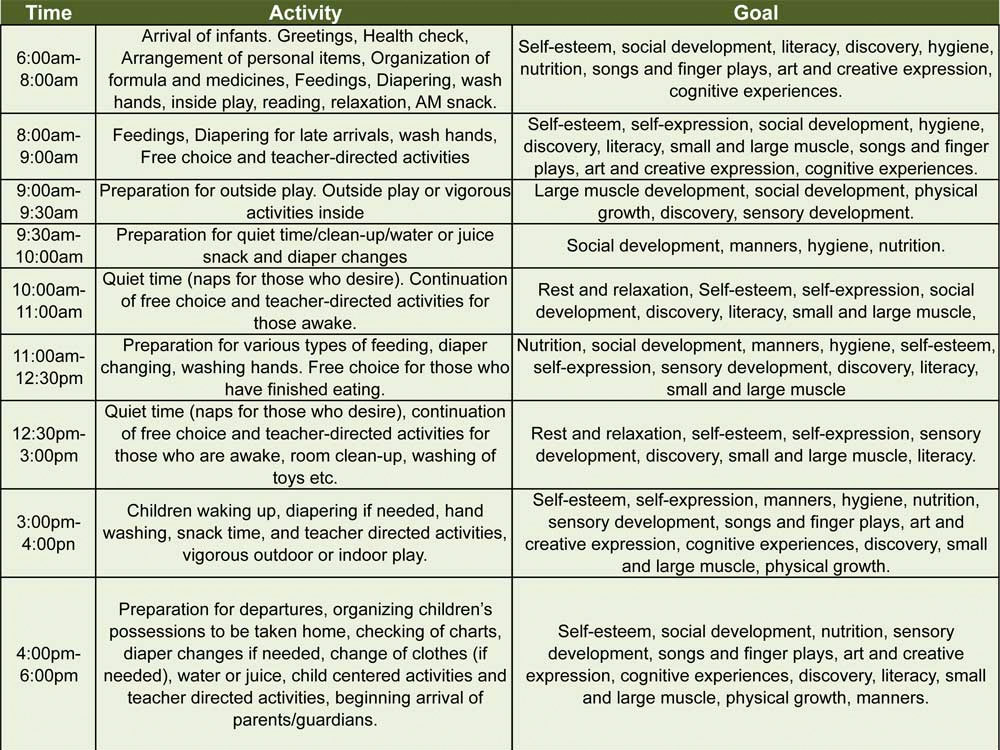 g. hungry vs. tired)
g. hungry vs. tired) g. “da, da, da”
g. “da, da, da”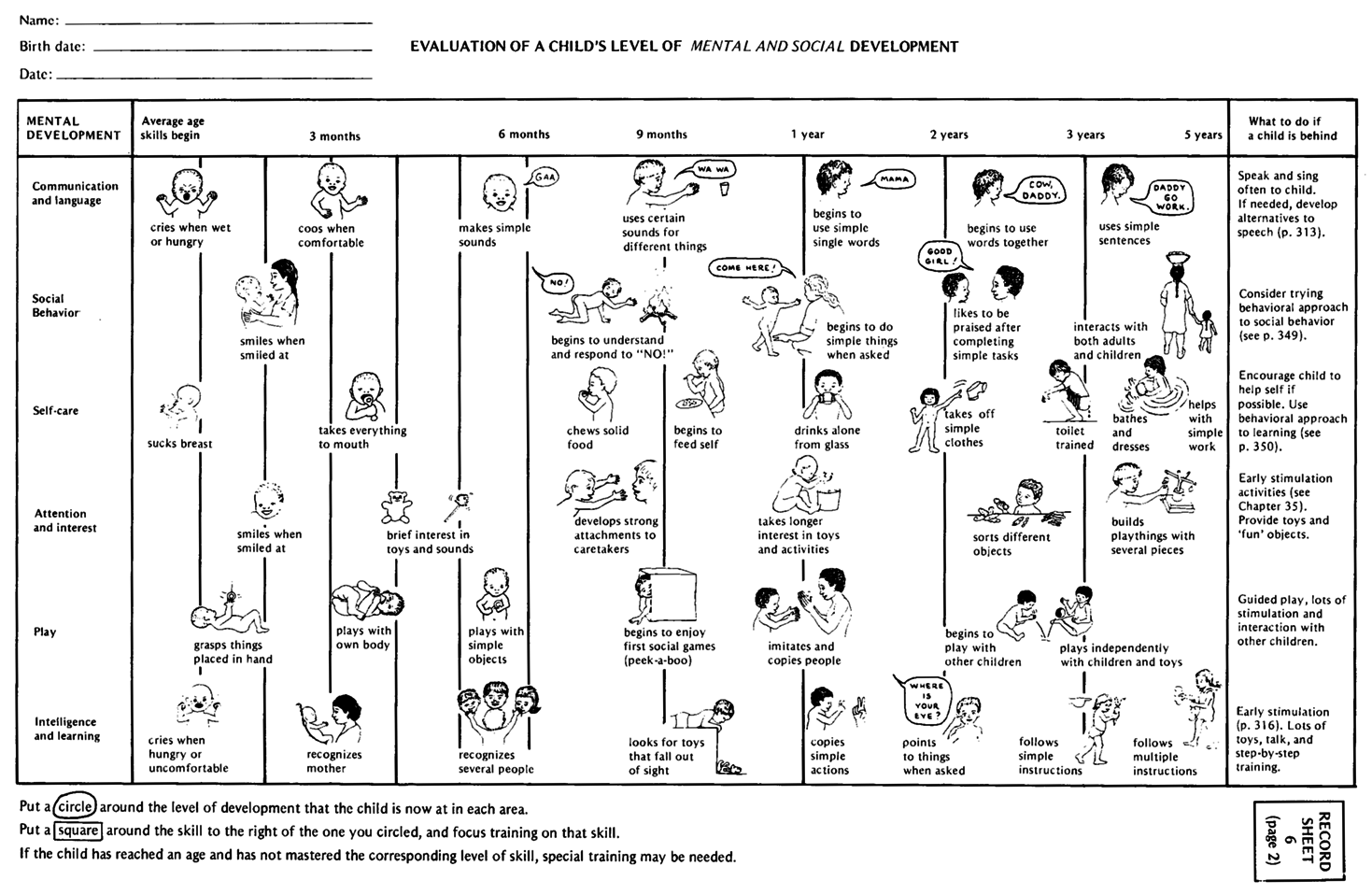 g. creeping, crawling
g. creeping, crawling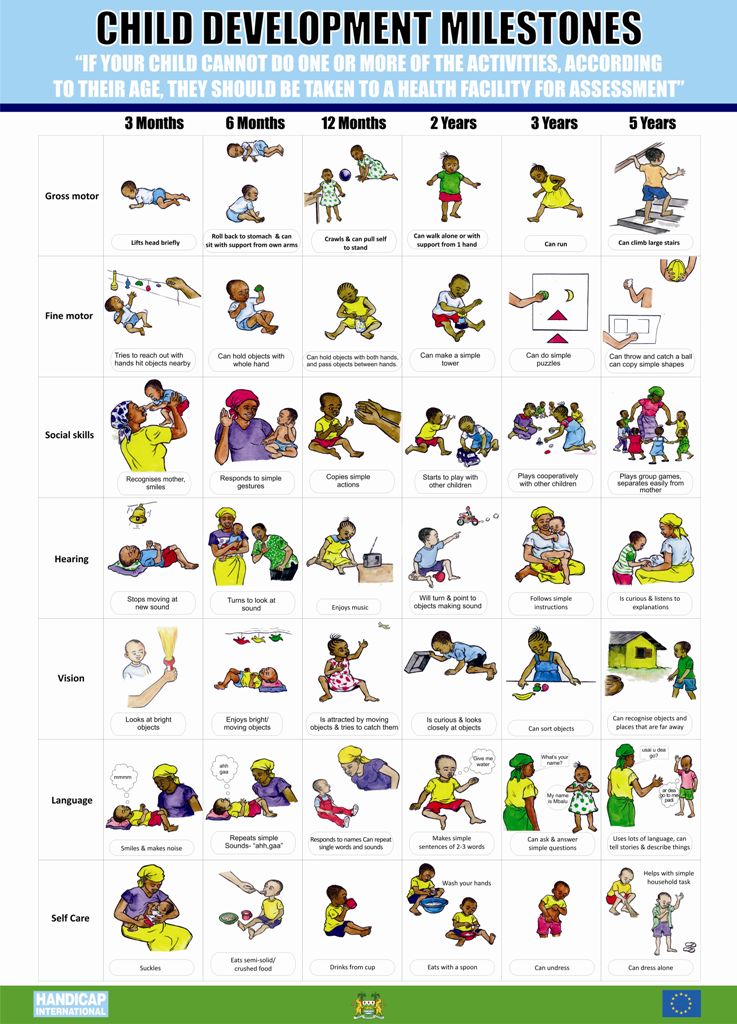 g. shaking head for “no”
g. shaking head for “no”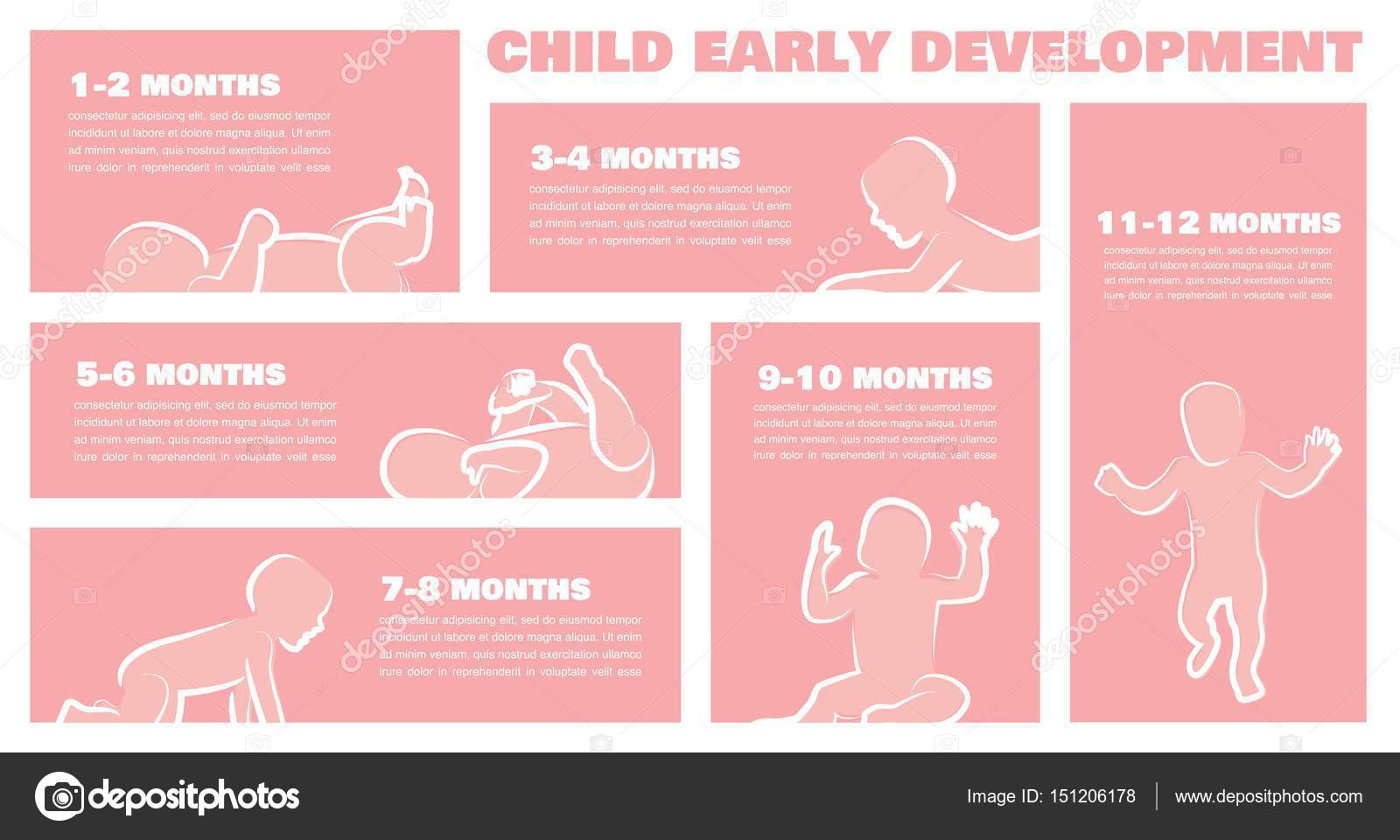 g. “Come here”
g. “Come here” g. “Pick up your coat and bring it to me”
g. “Pick up your coat and bring it to me”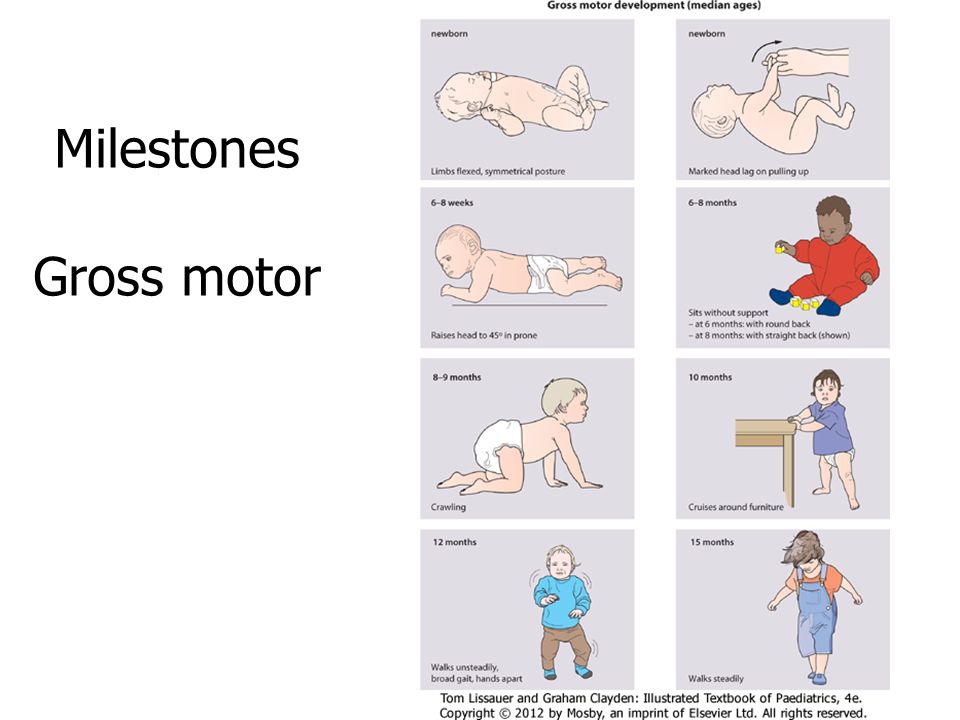
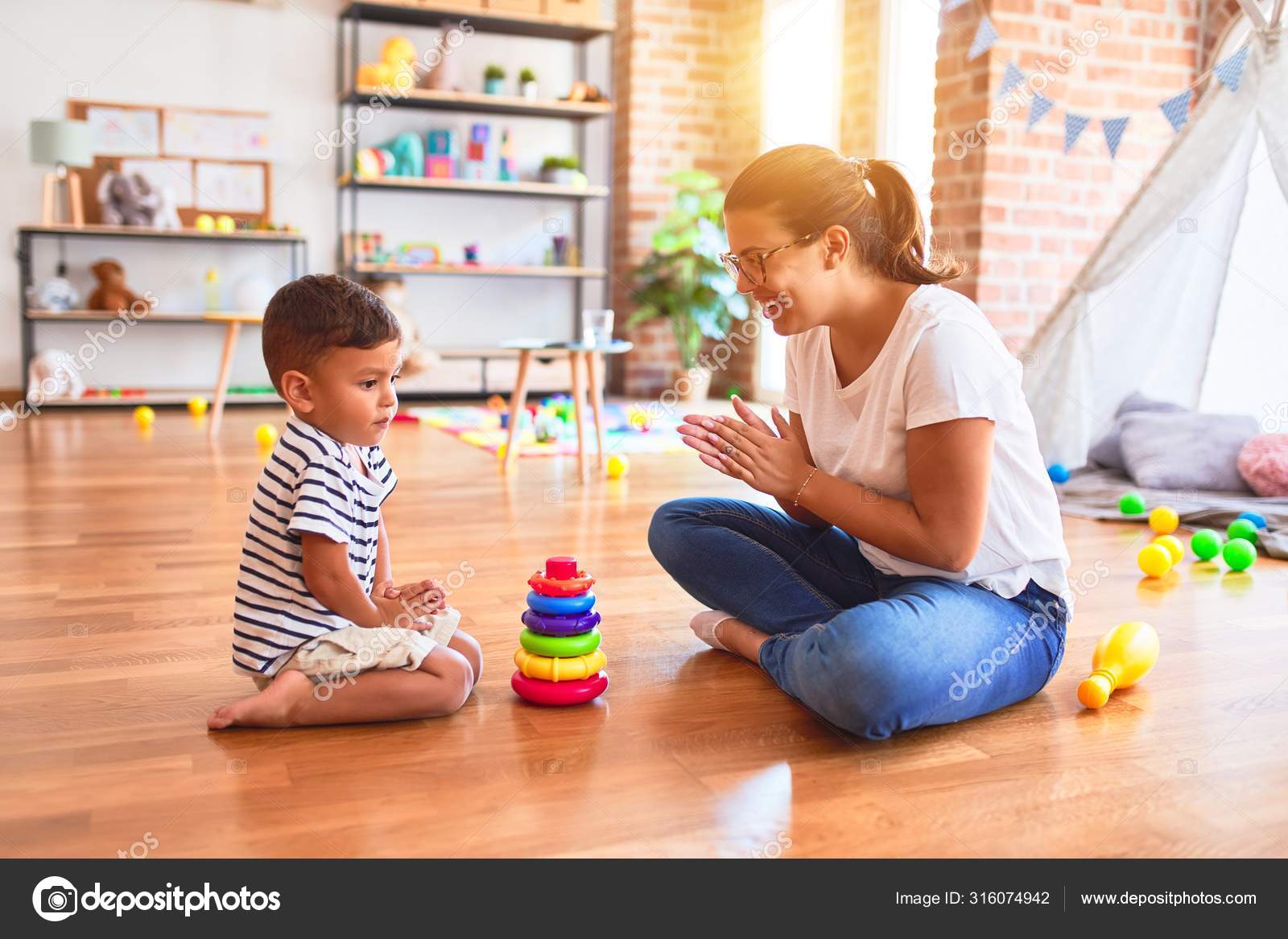 ” Prone refers to lying on your stomach; many therapists call this “tummy time.” A young baby needs to spend playtime in “prone.” Tummy time helps develop postural control and strength to provide stability for hands and fingers. This core stability helps support the development of fine motor skills. Foundational fine motor skills are developed through gross motor skills such as playing in prone, rolling over, sitting up, and crawling.
” Prone refers to lying on your stomach; many therapists call this “tummy time.” A young baby needs to spend playtime in “prone.” Tummy time helps develop postural control and strength to provide stability for hands and fingers. This core stability helps support the development of fine motor skills. Foundational fine motor skills are developed through gross motor skills such as playing in prone, rolling over, sitting up, and crawling.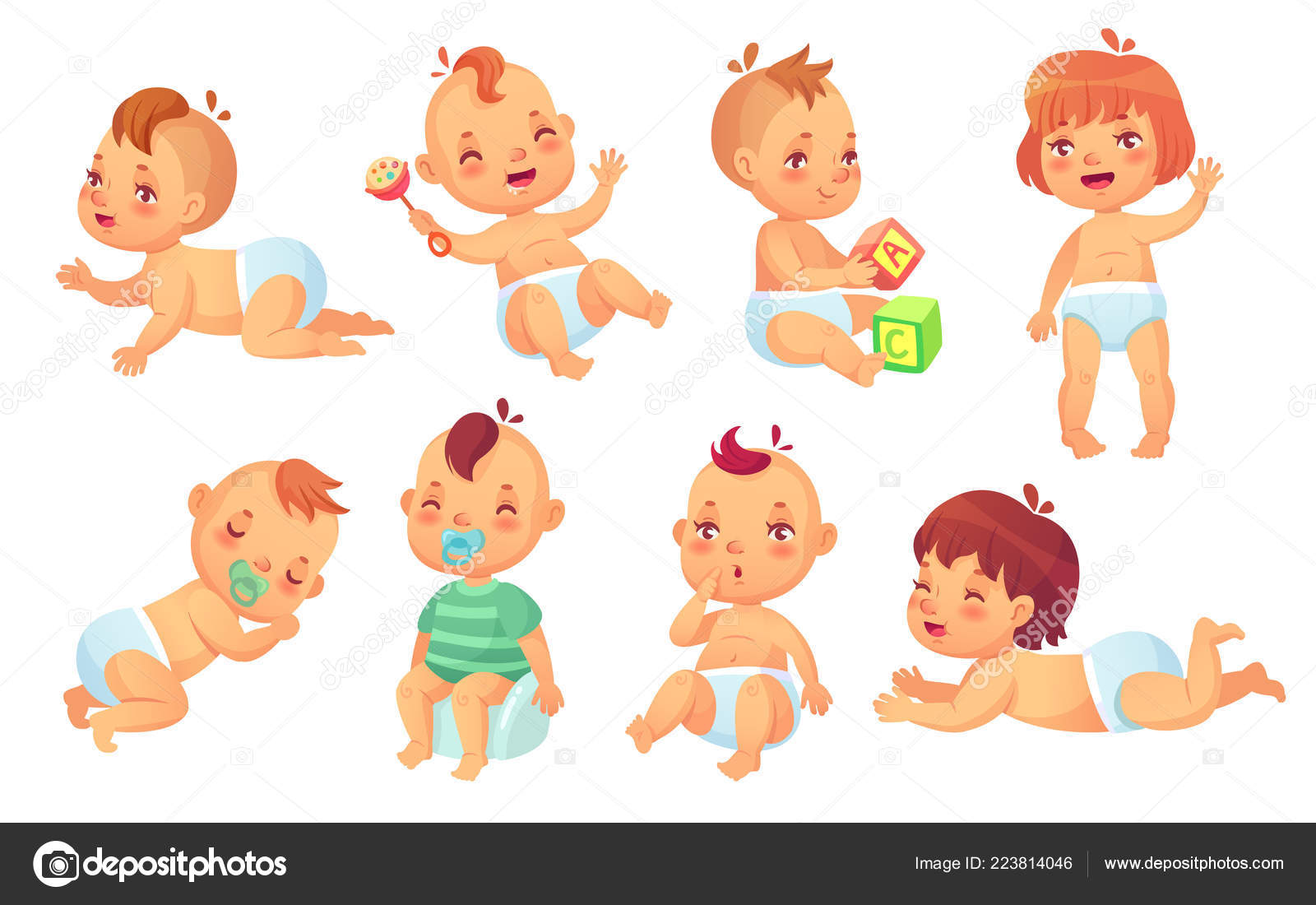




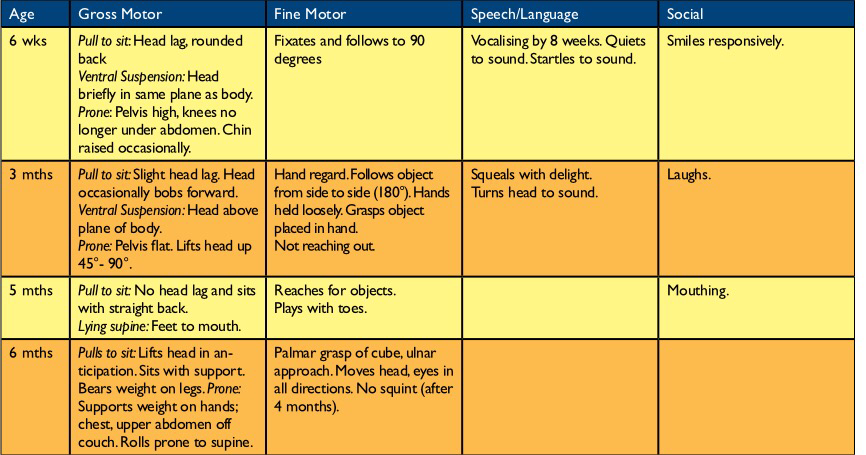 By 2 months, can track moving objects up to 180 degrees, and prefers faces.
By 2 months, can track moving objects up to 180 degrees, and prefers faces.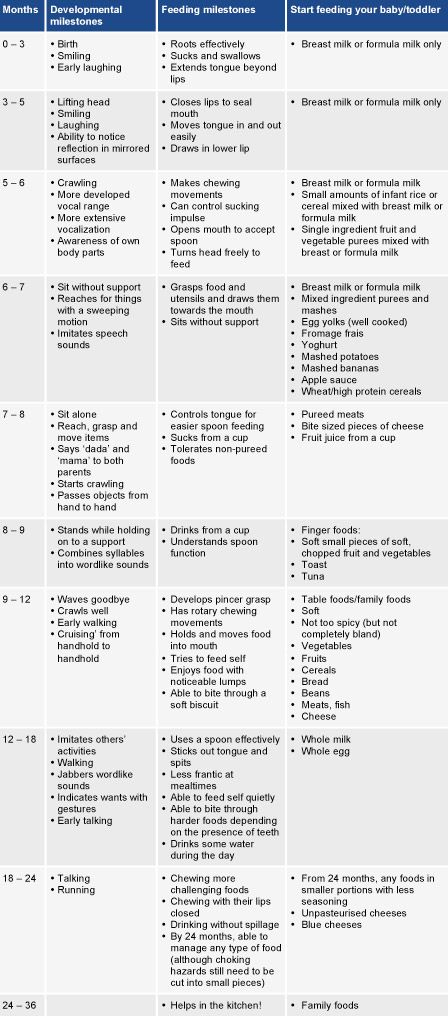 Use drawer and cupboard safety latches. Post the national poison control number — 1-800-222-1222 — near the phone.
Use drawer and cupboard safety latches. Post the national poison control number — 1-800-222-1222 — near the phone. Once a baby can roll over by himself, the maturing nervous system greatly reduces the risk for SIDS.
Once a baby can roll over by himself, the maturing nervous system greatly reduces the risk for SIDS.
